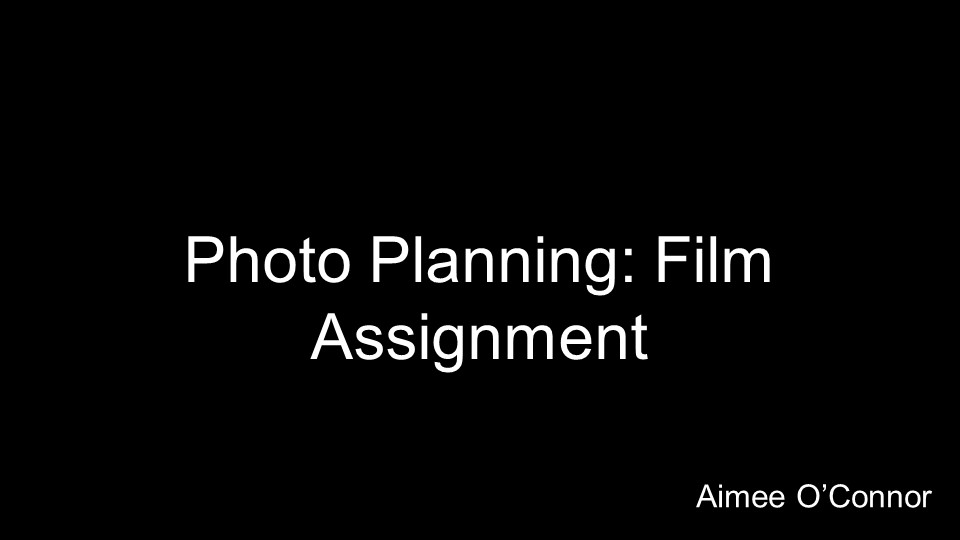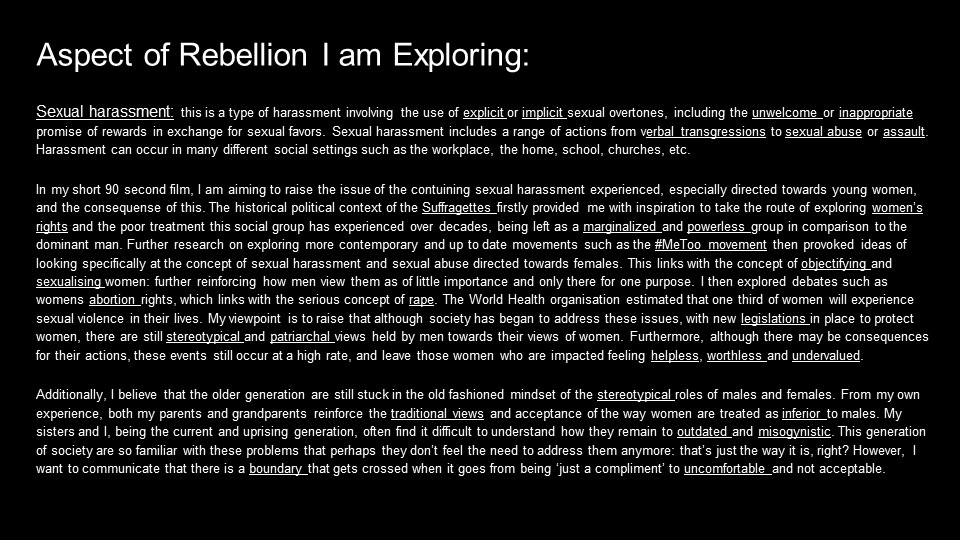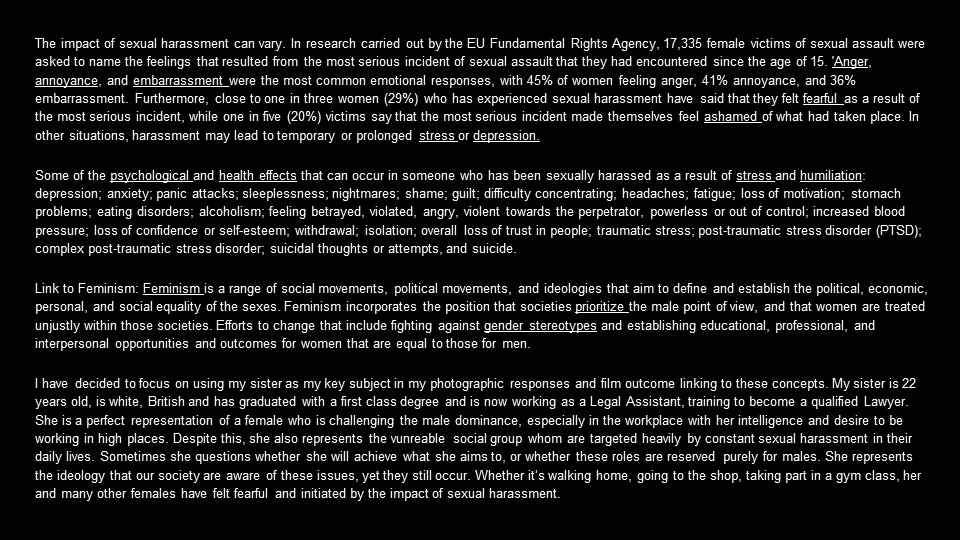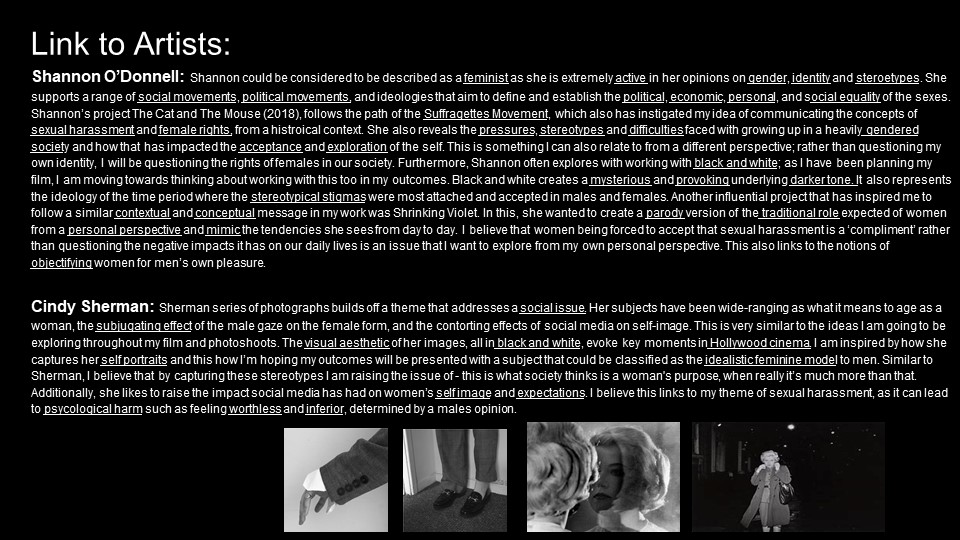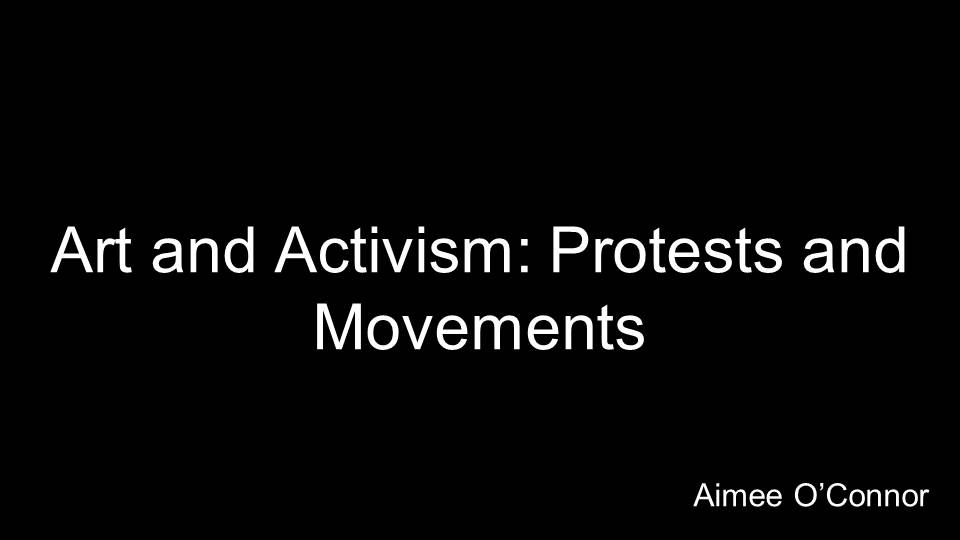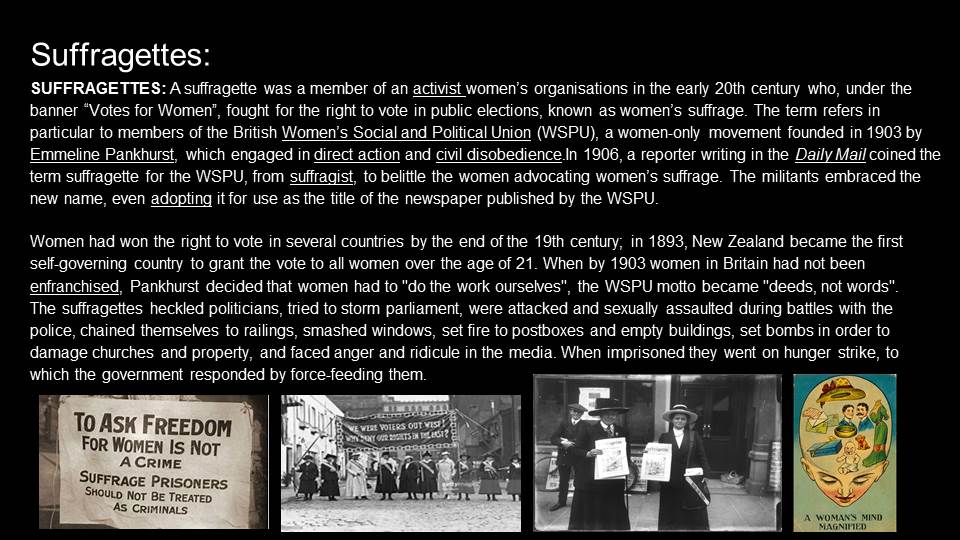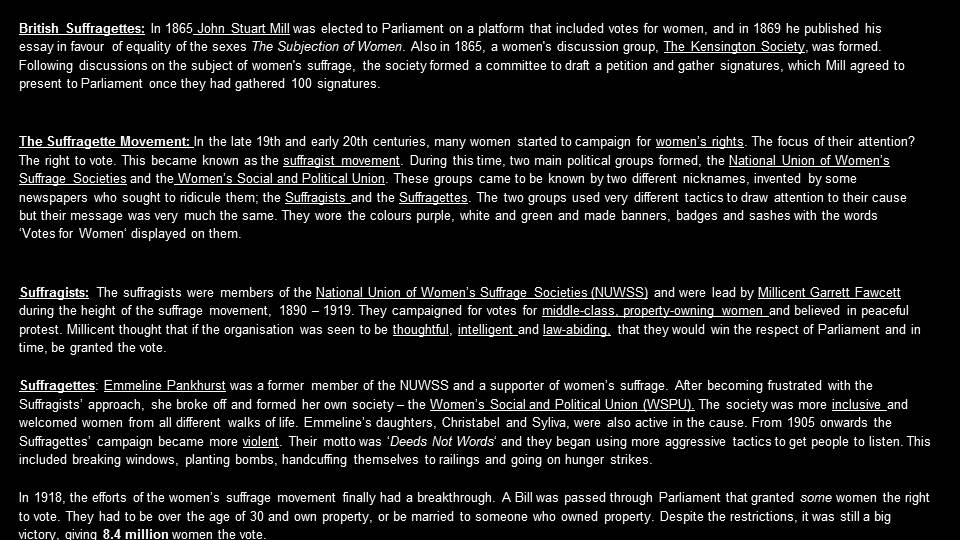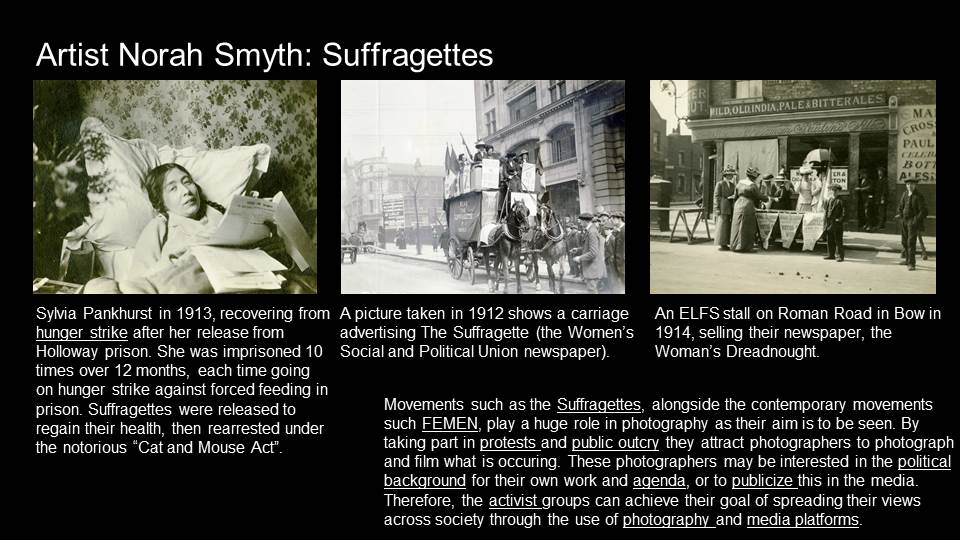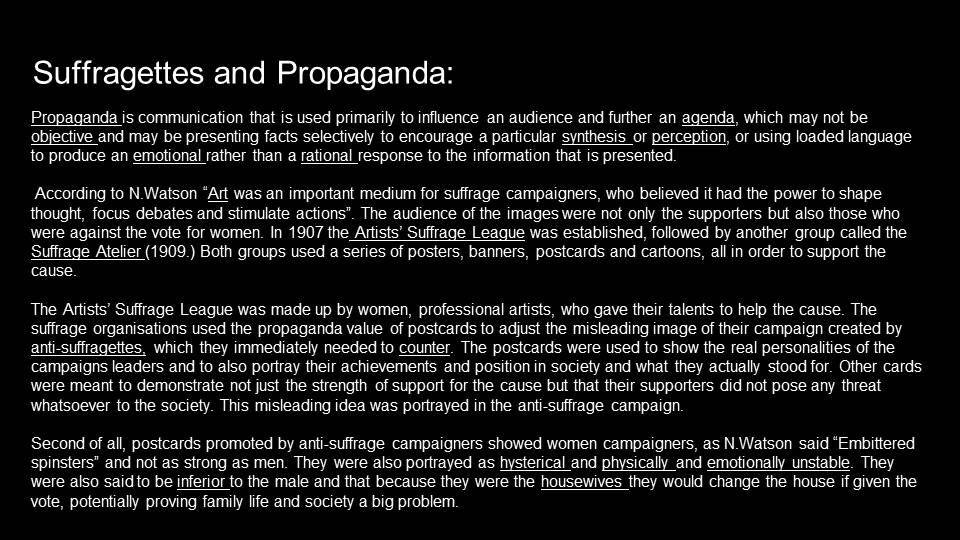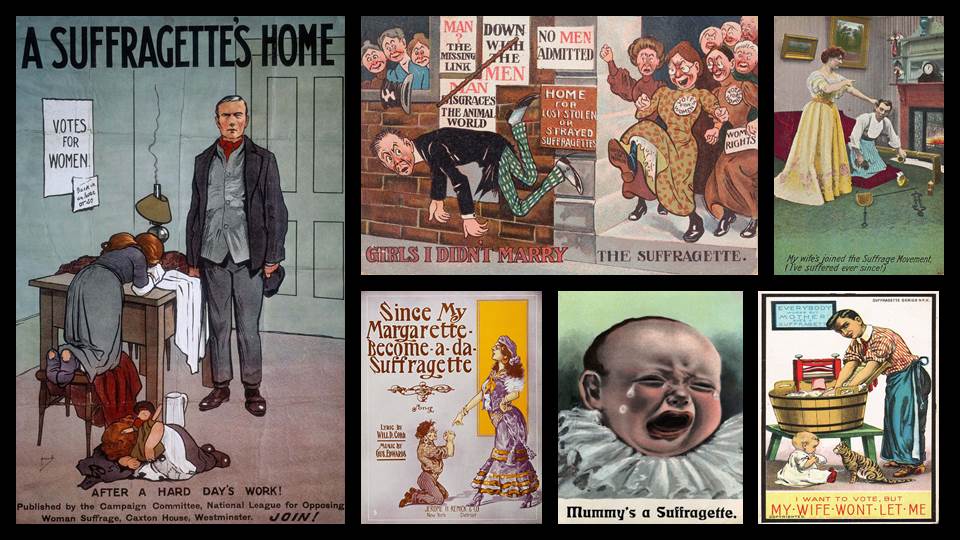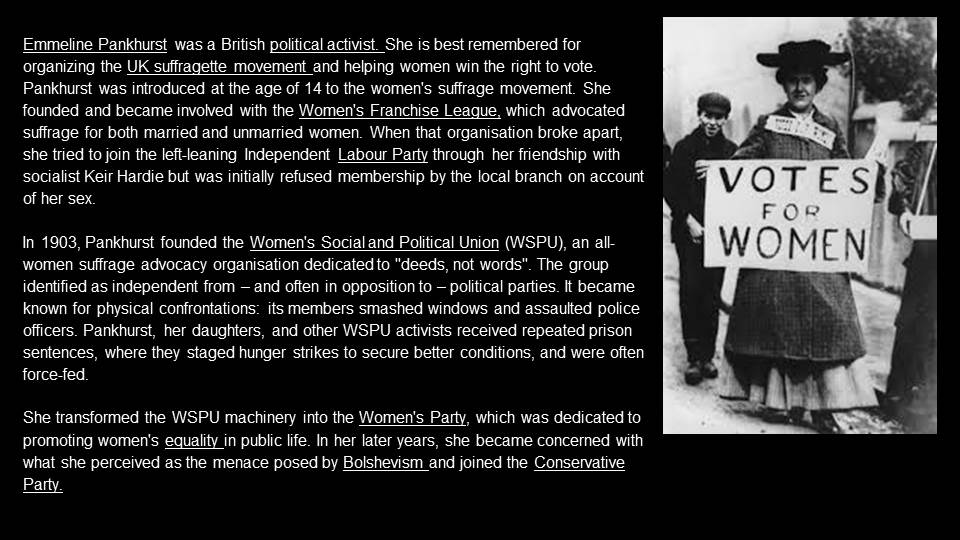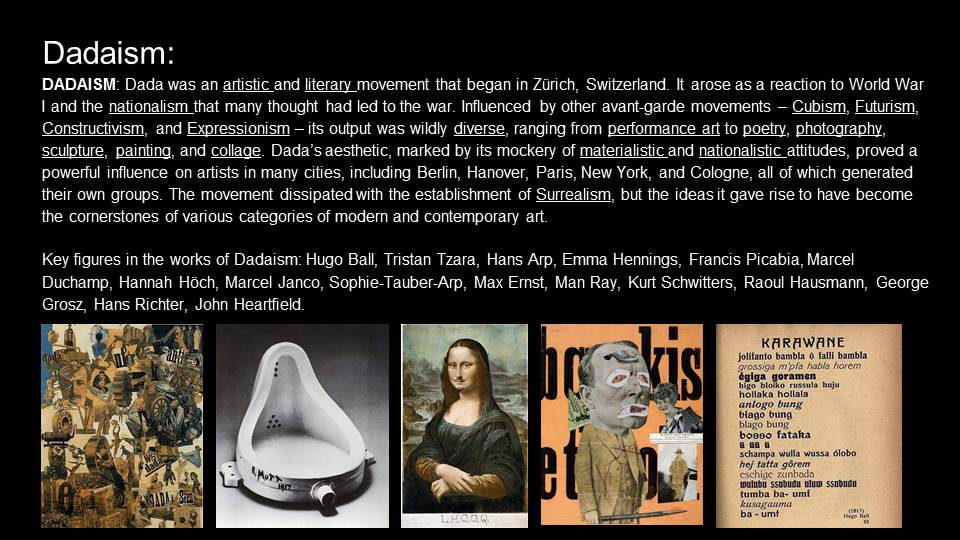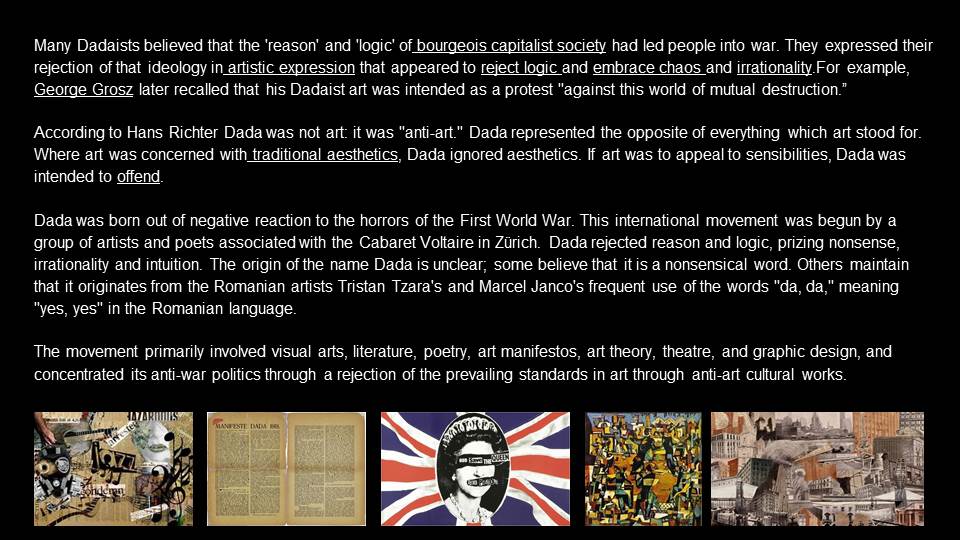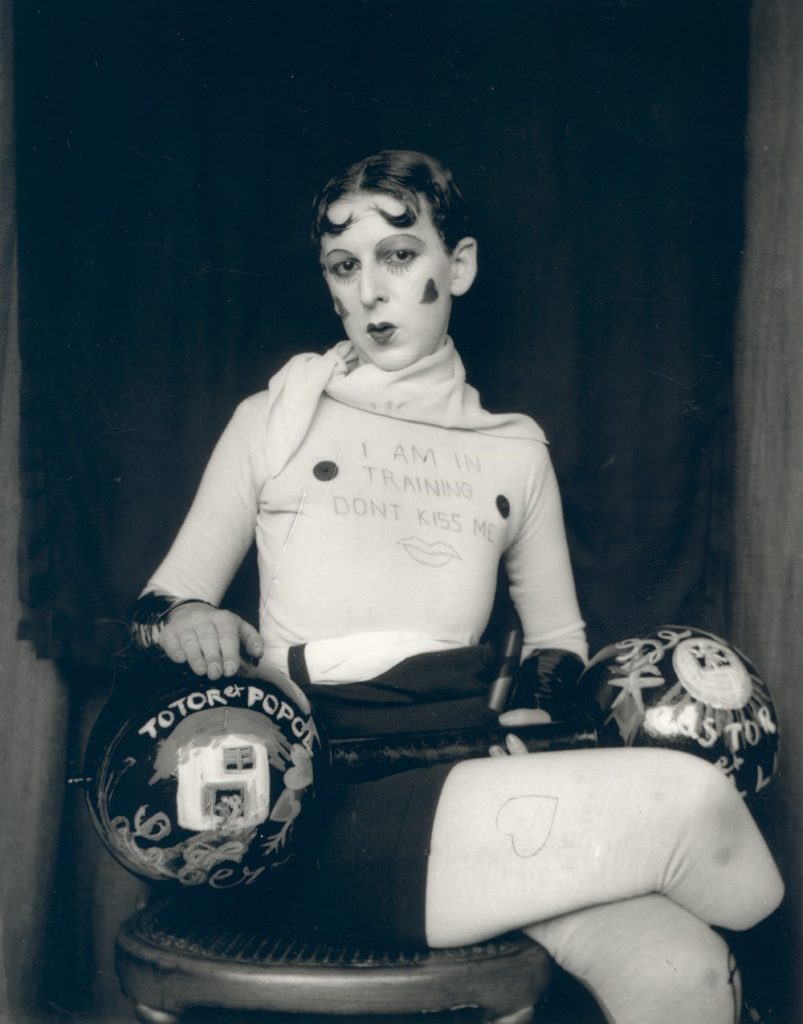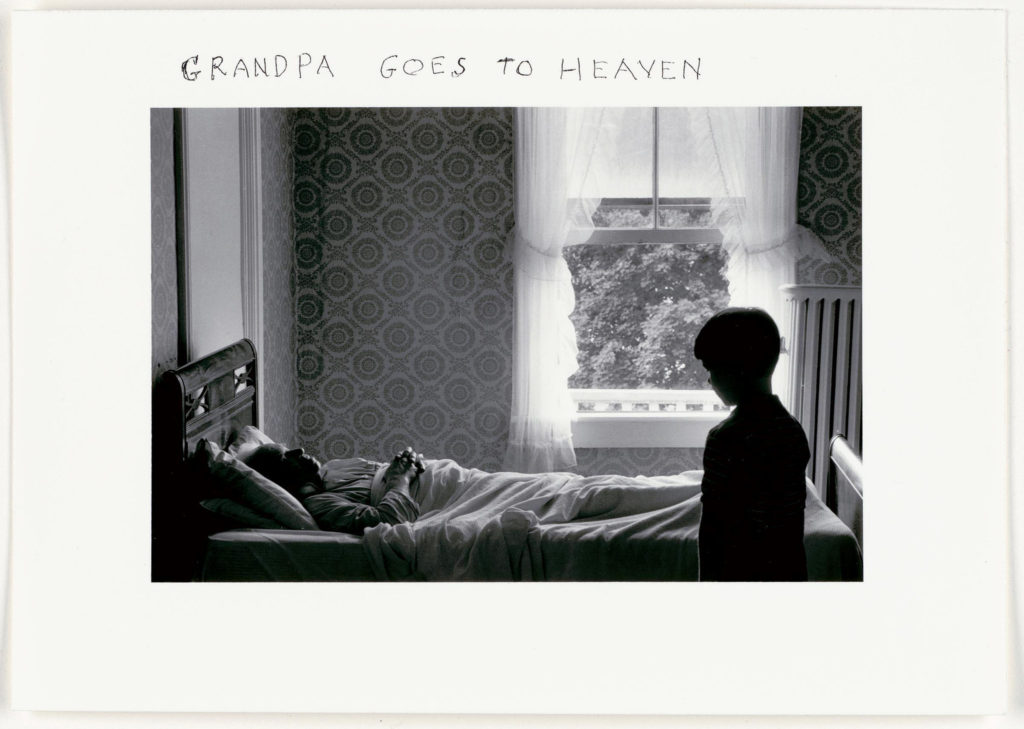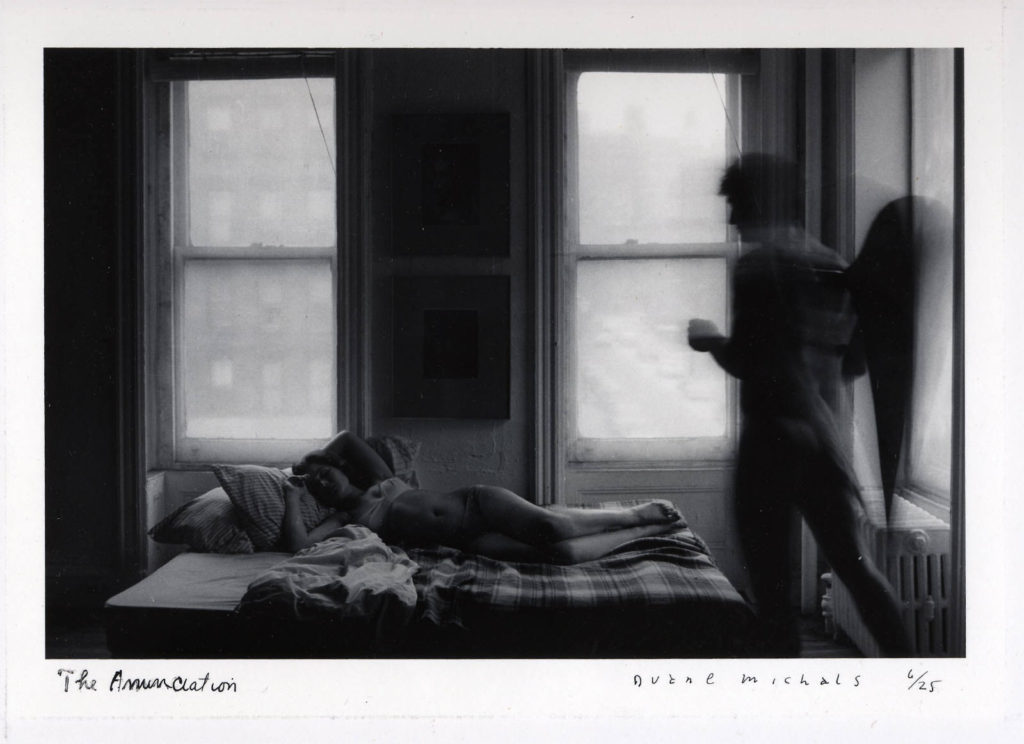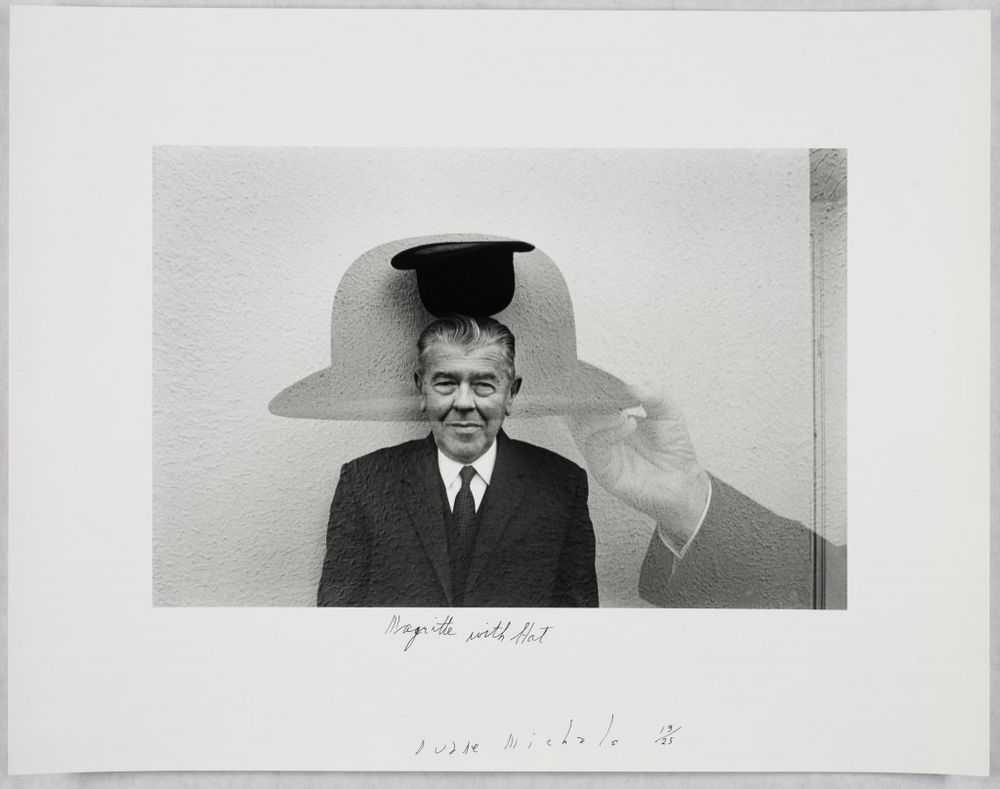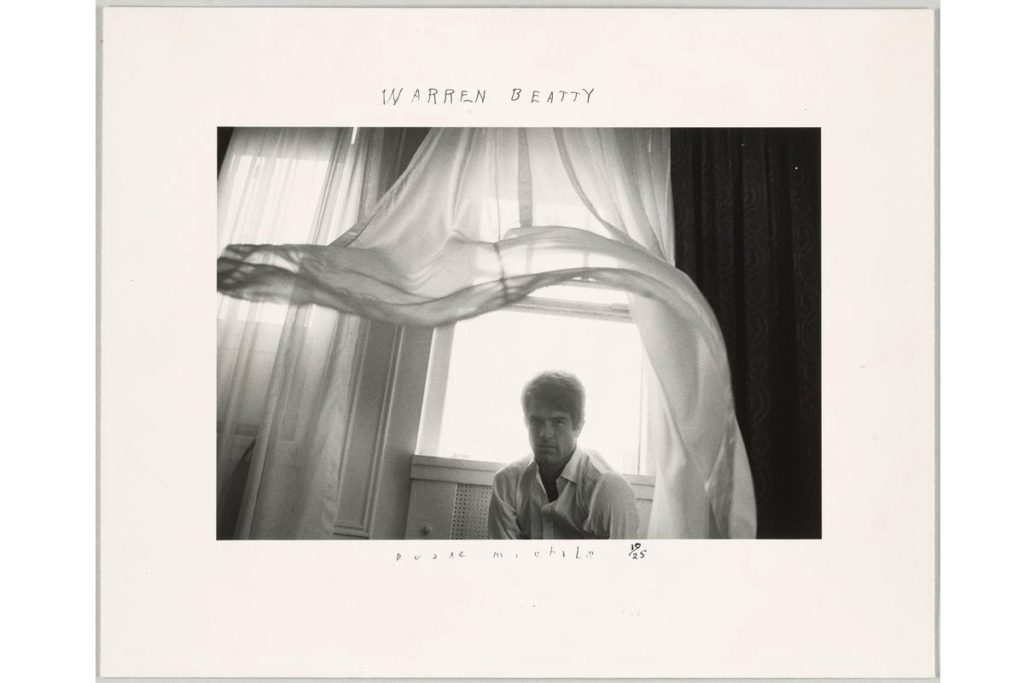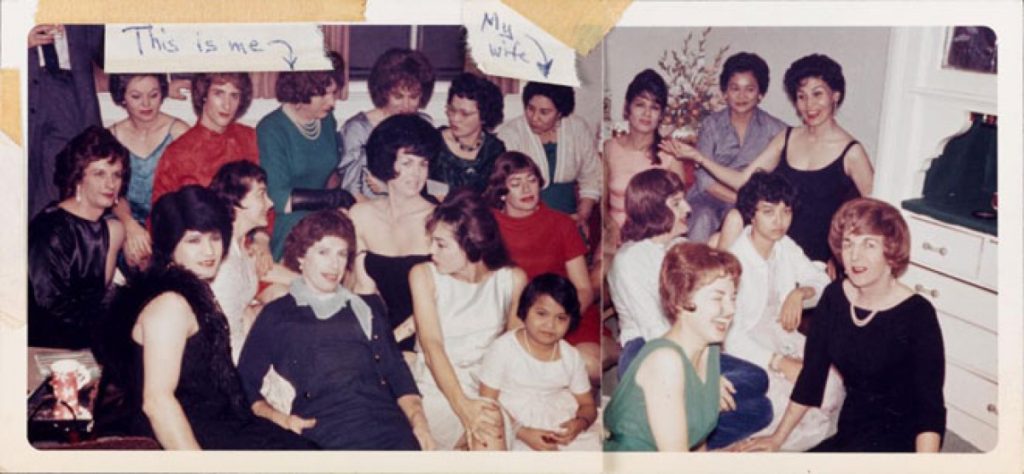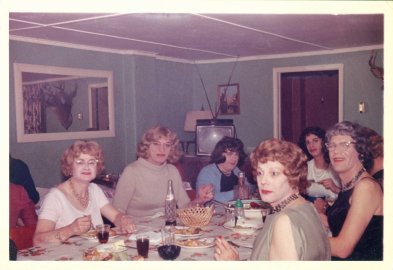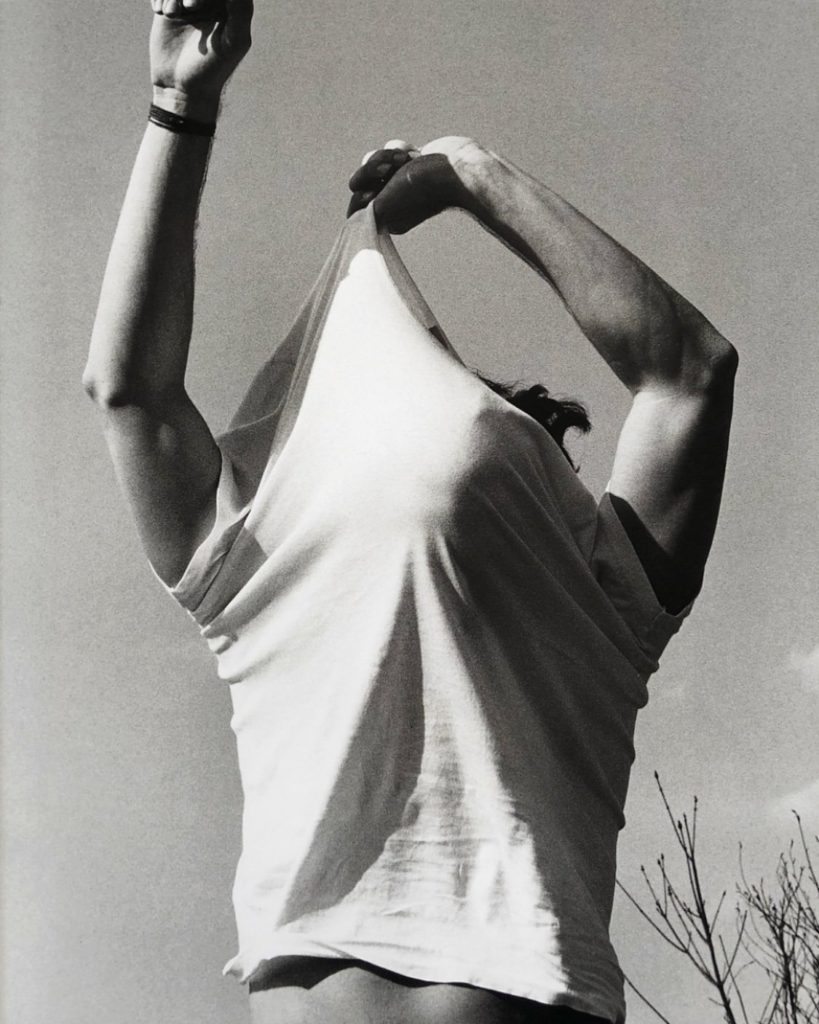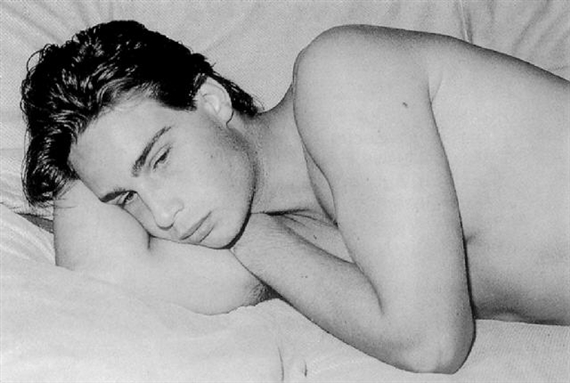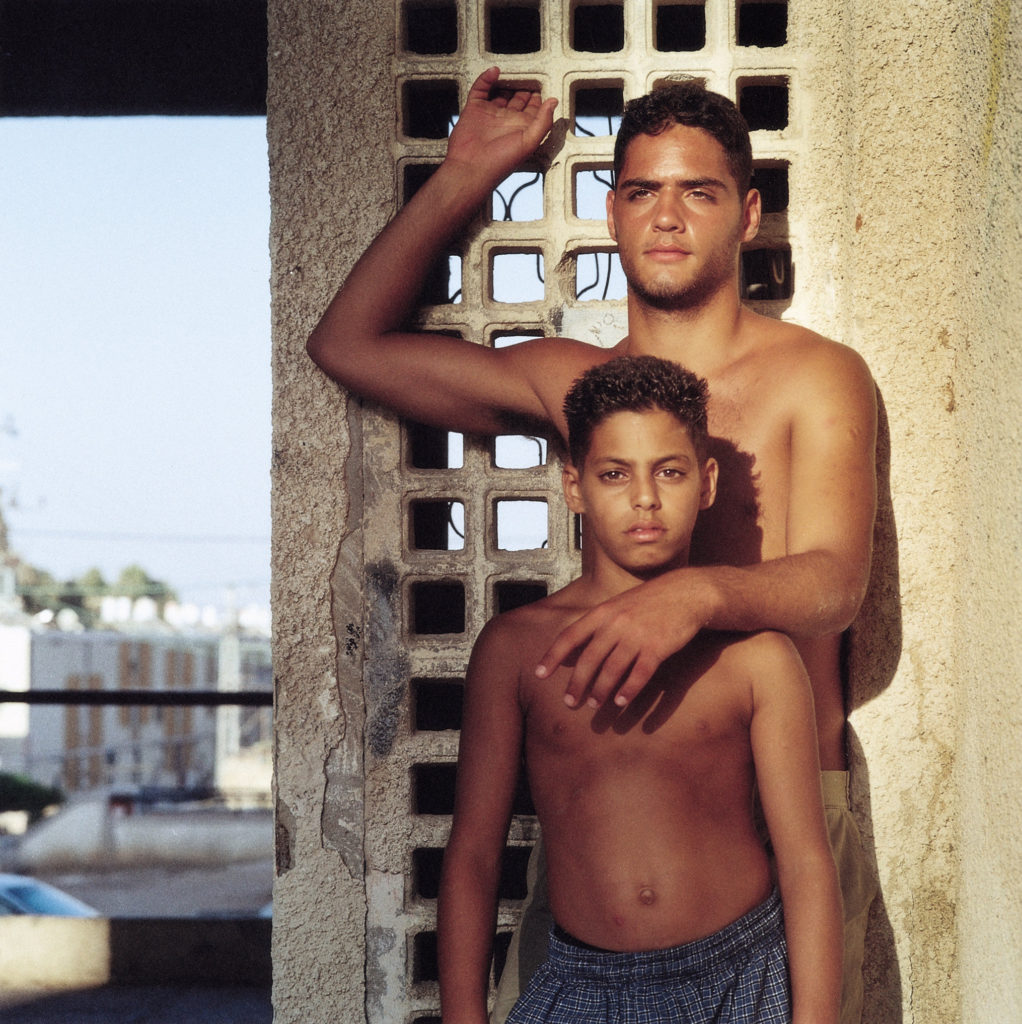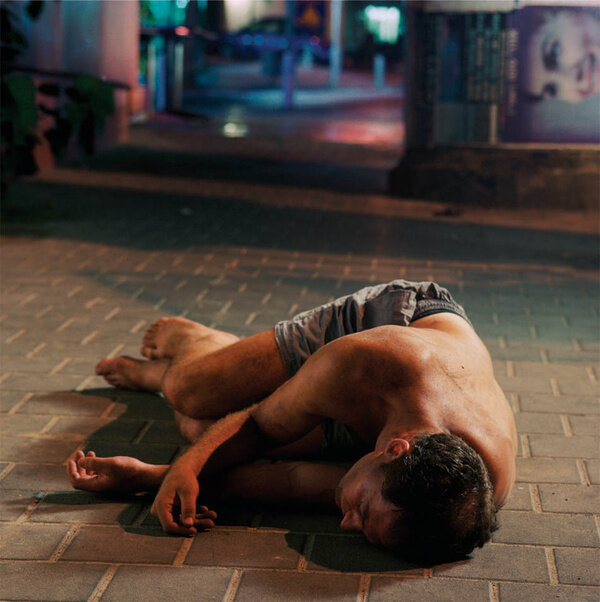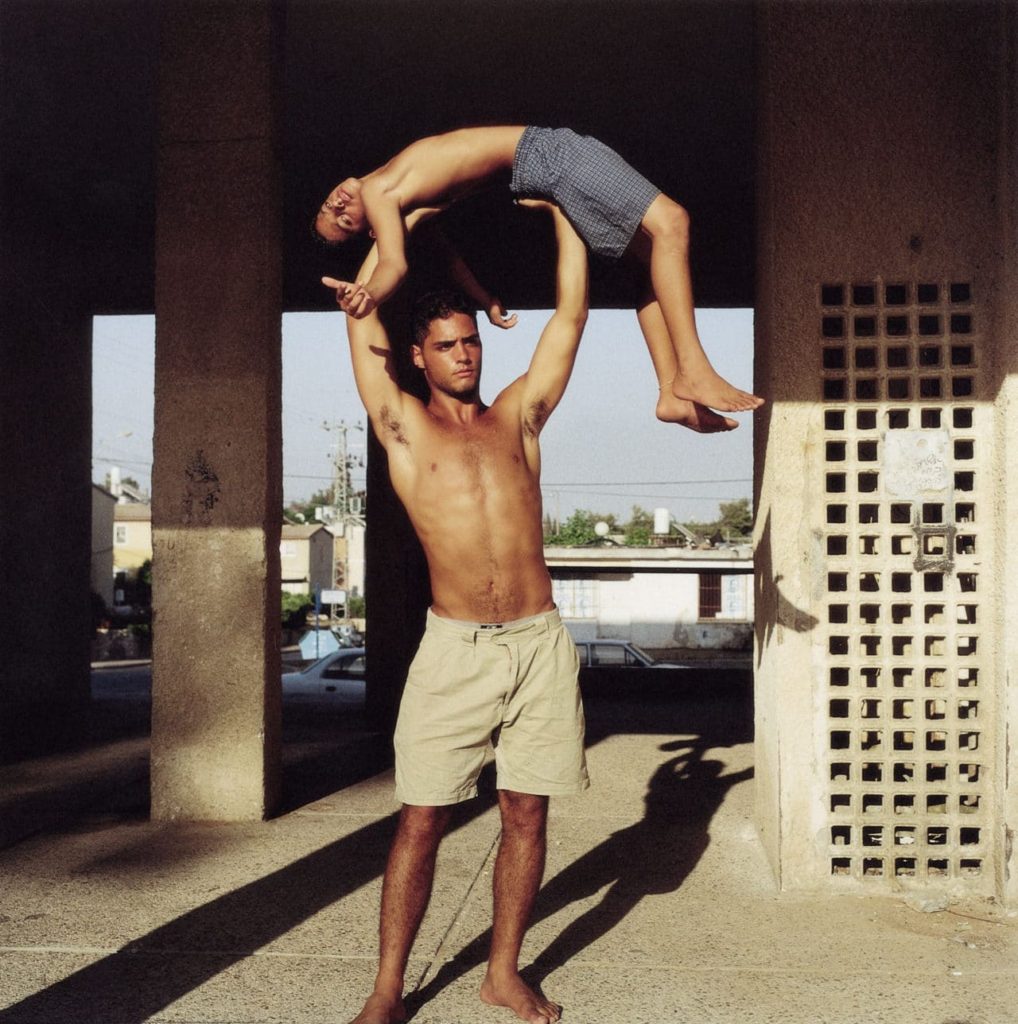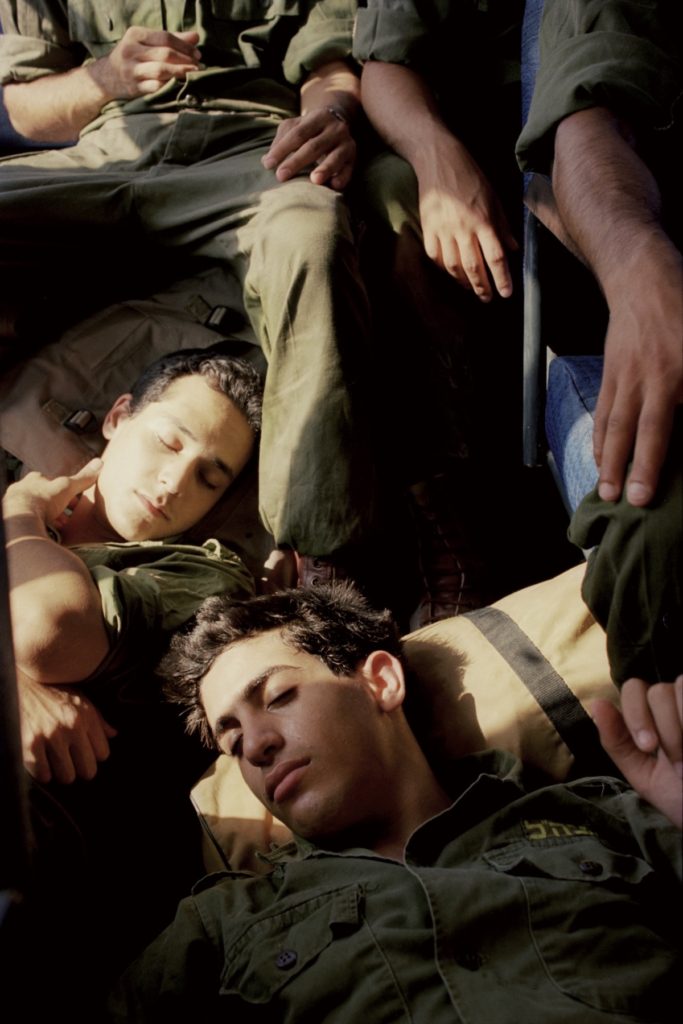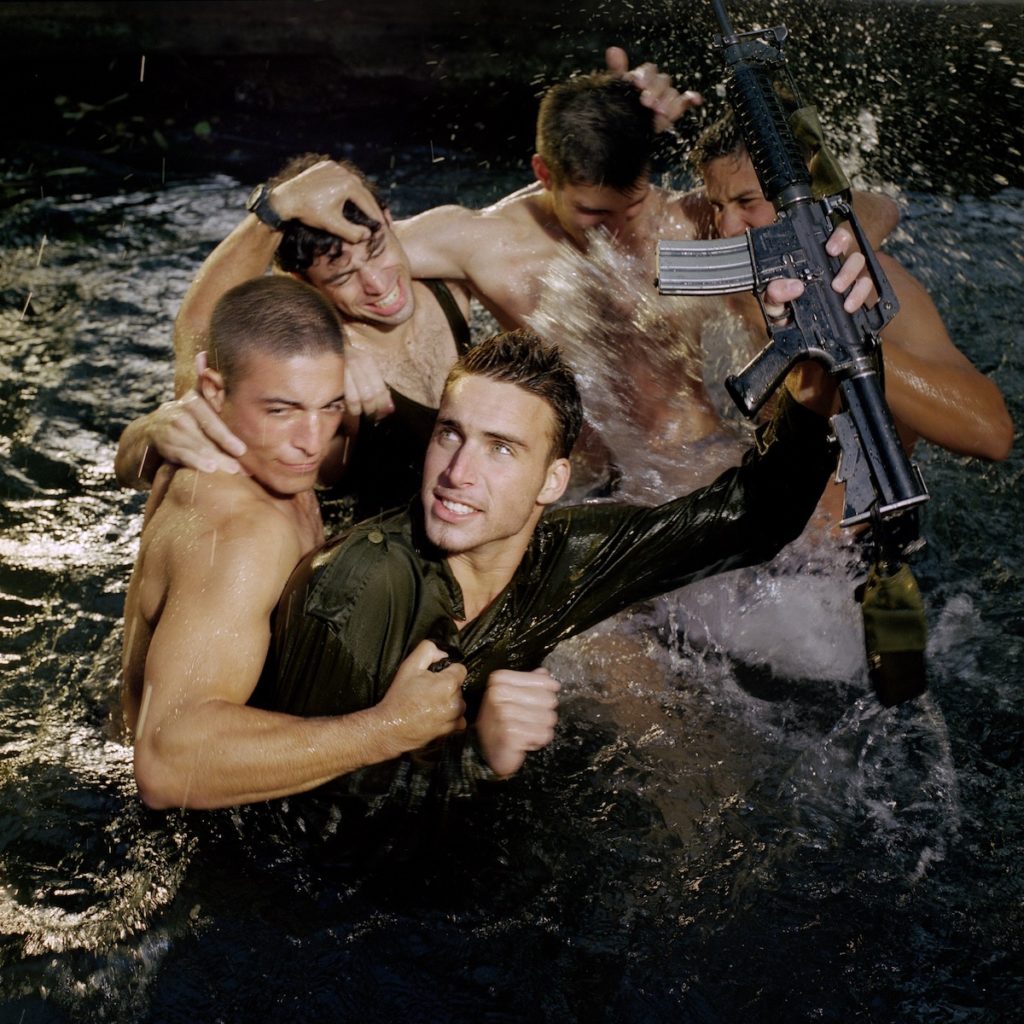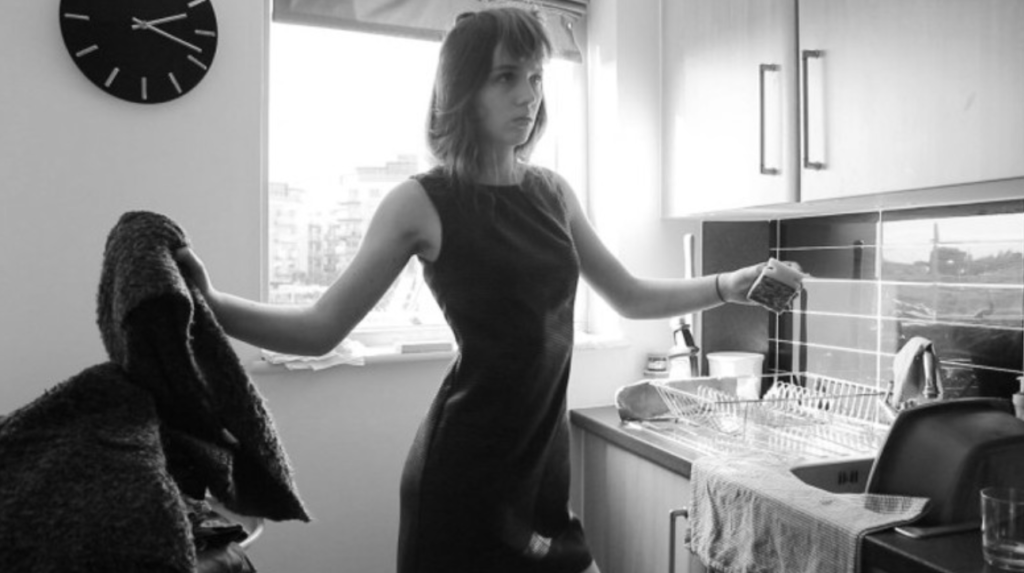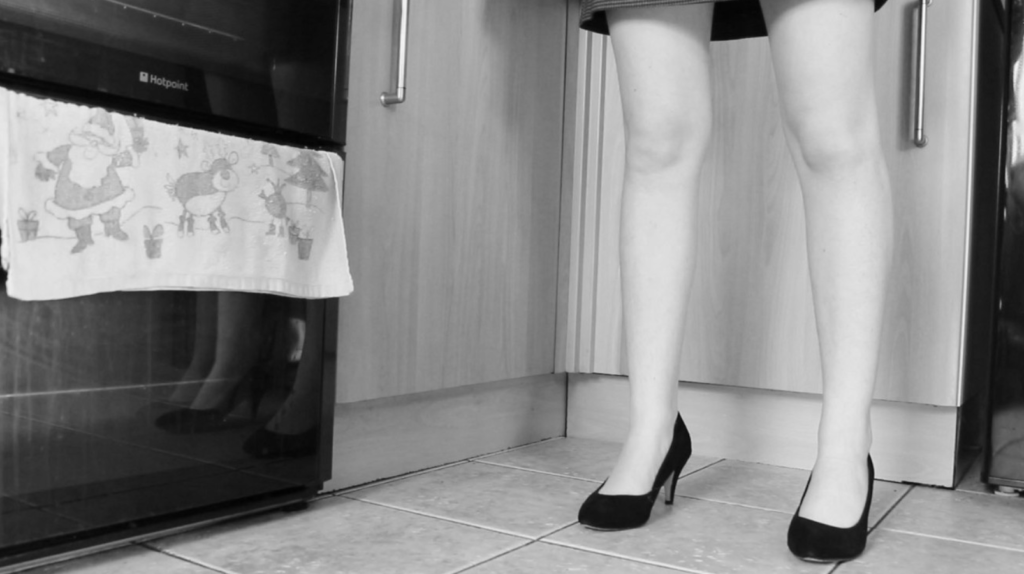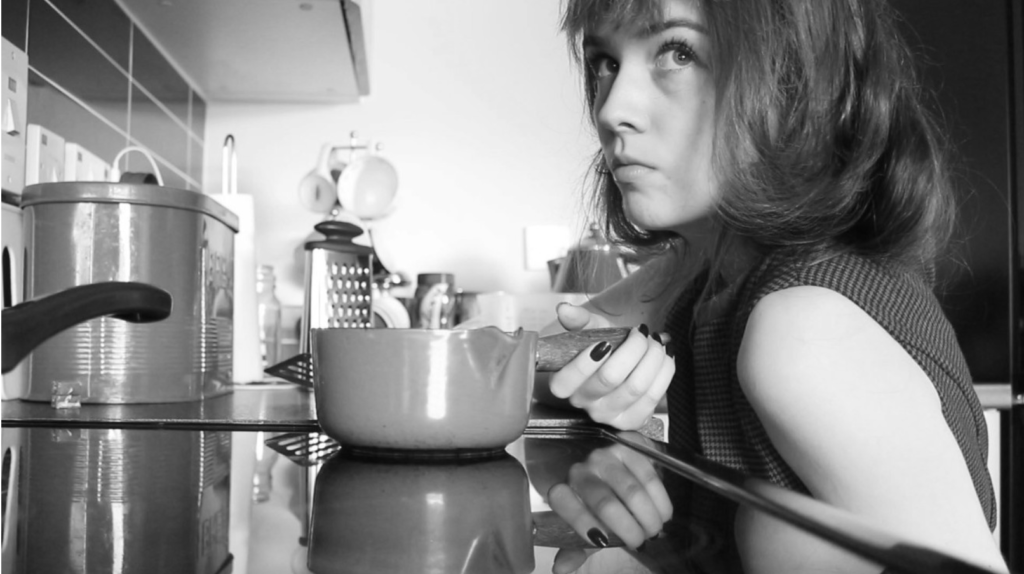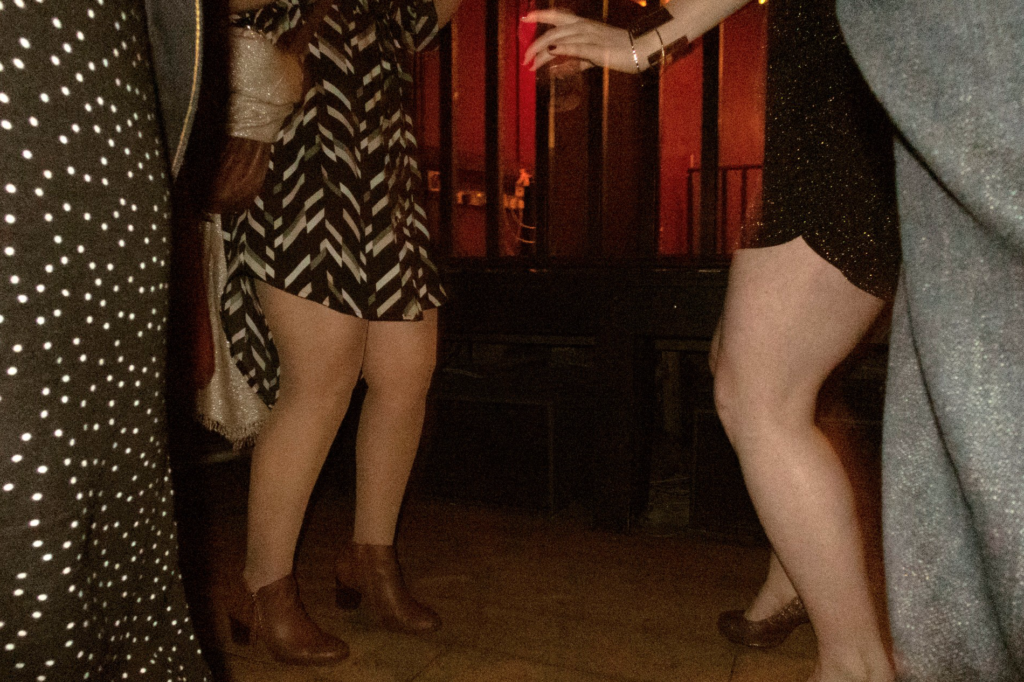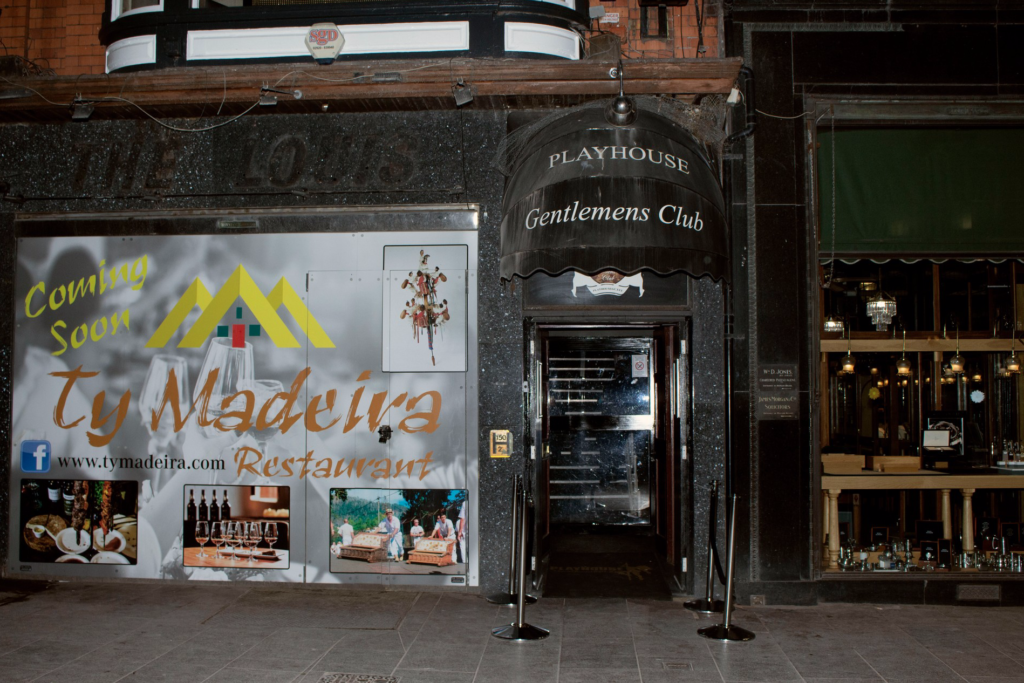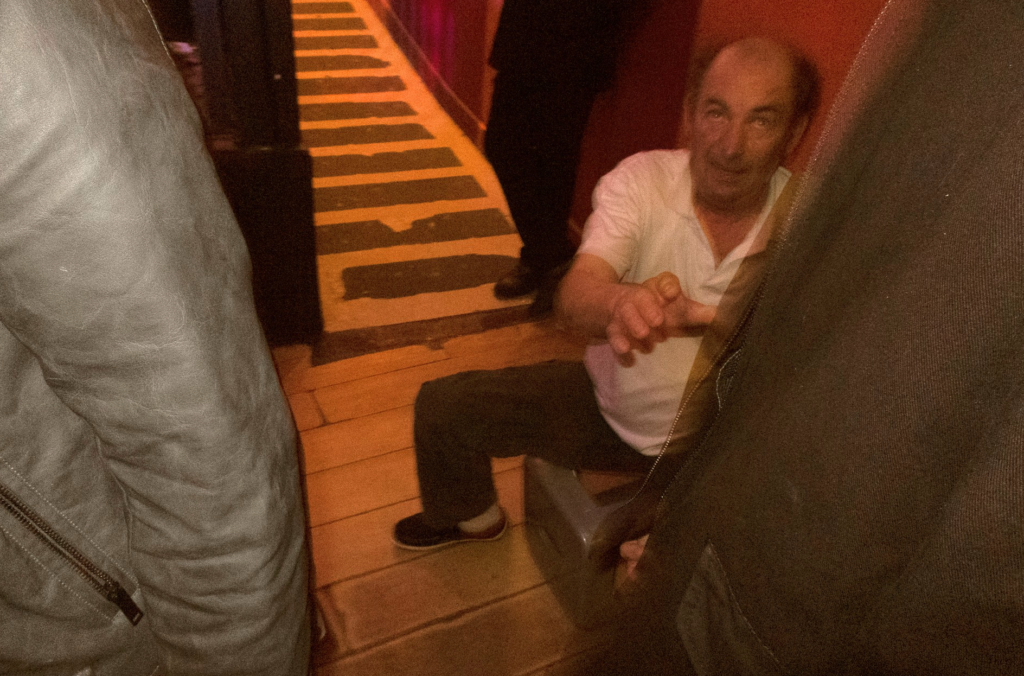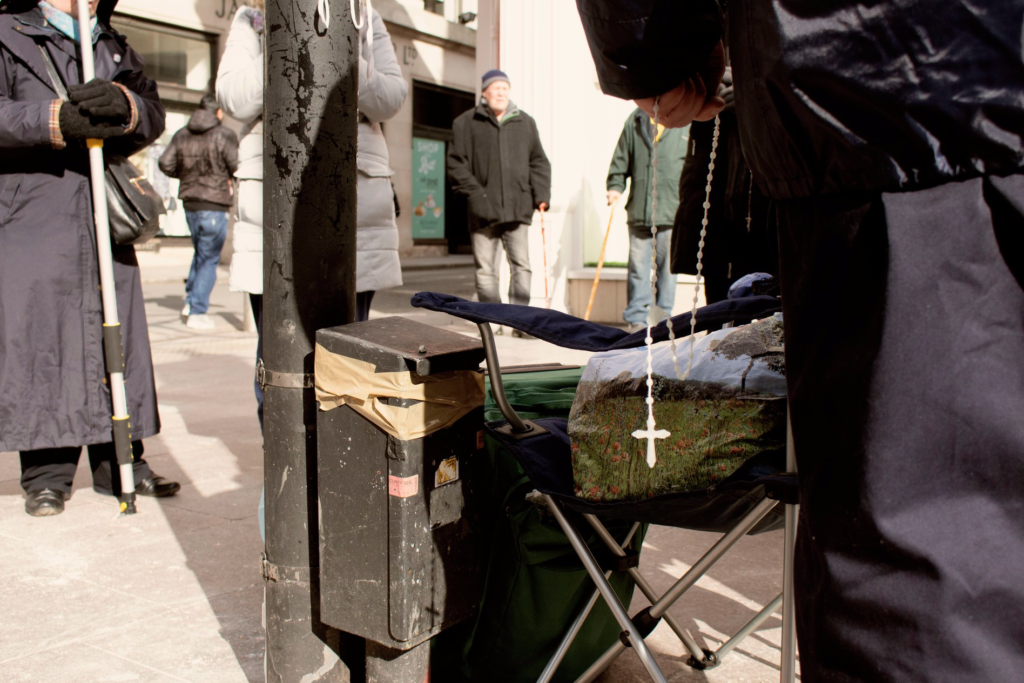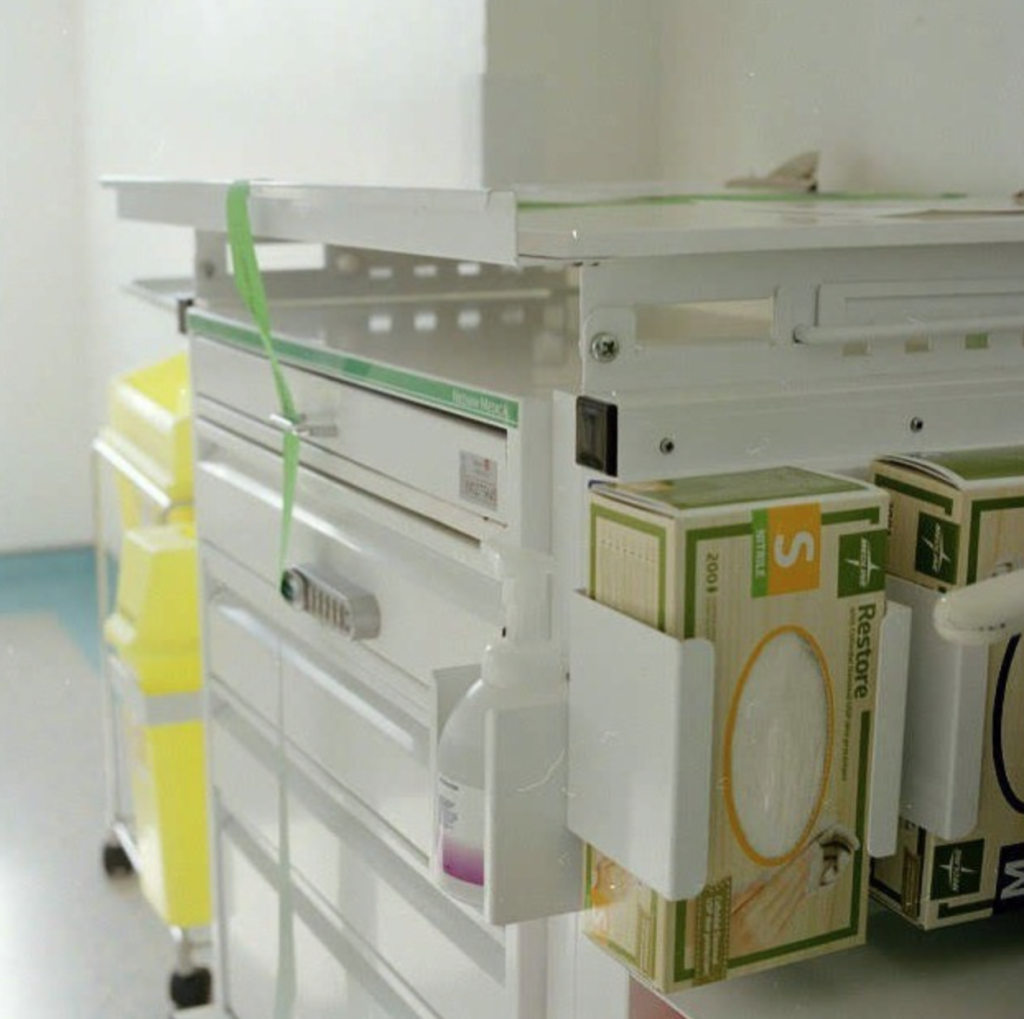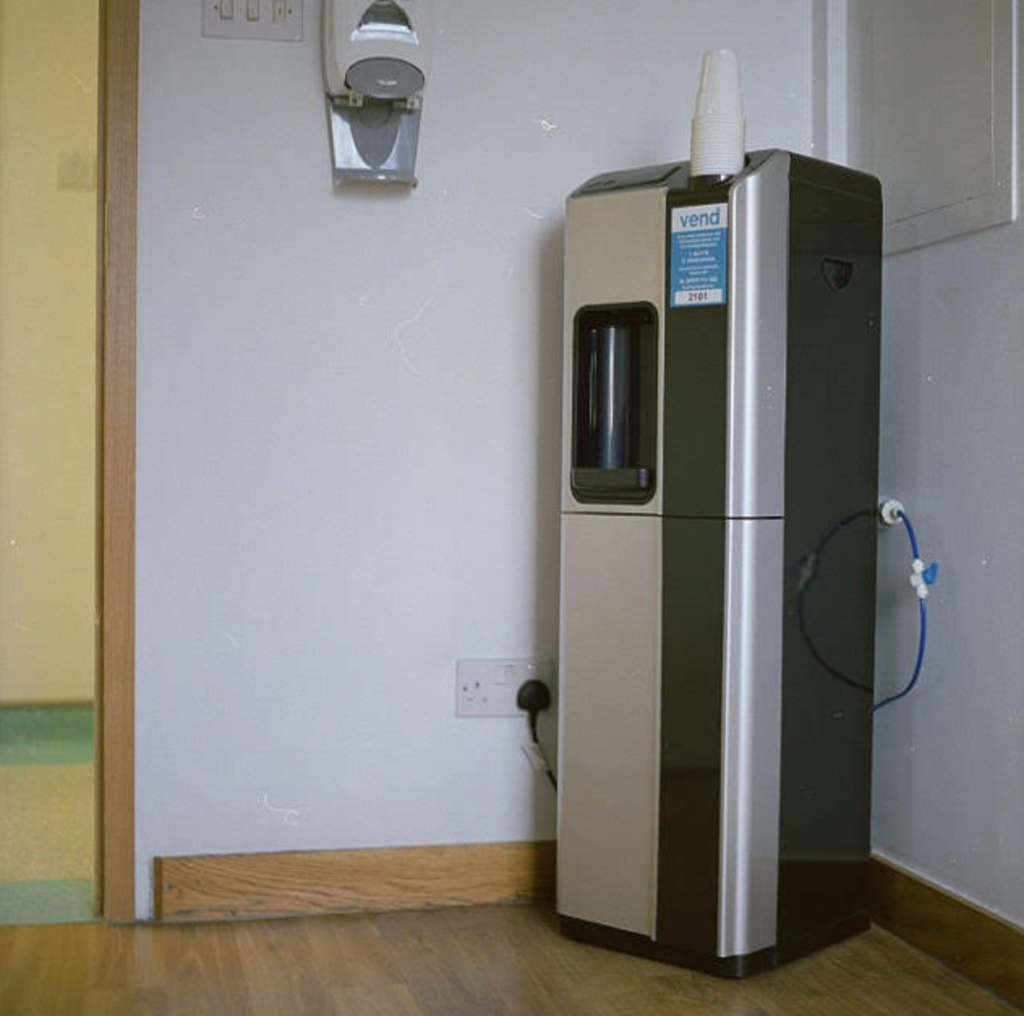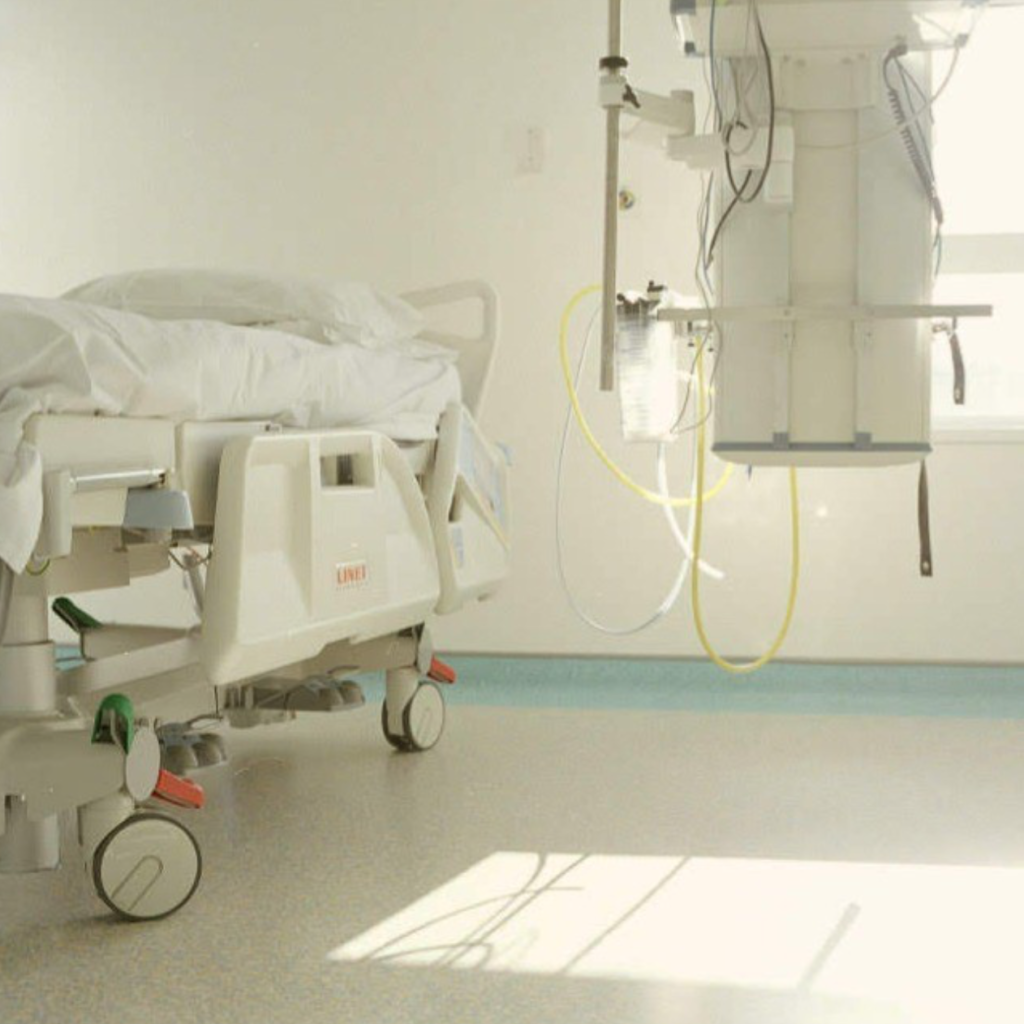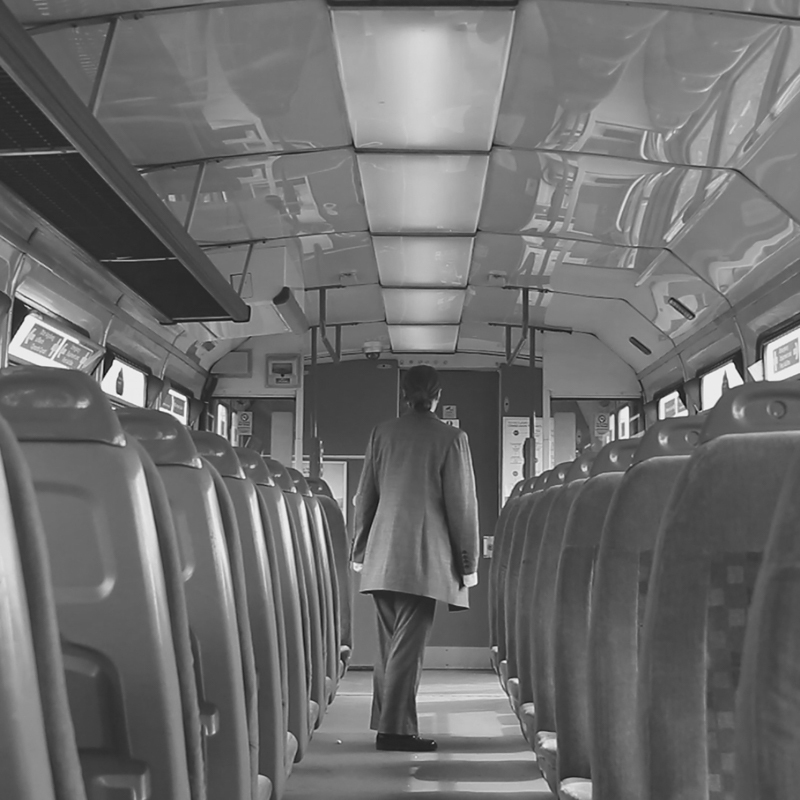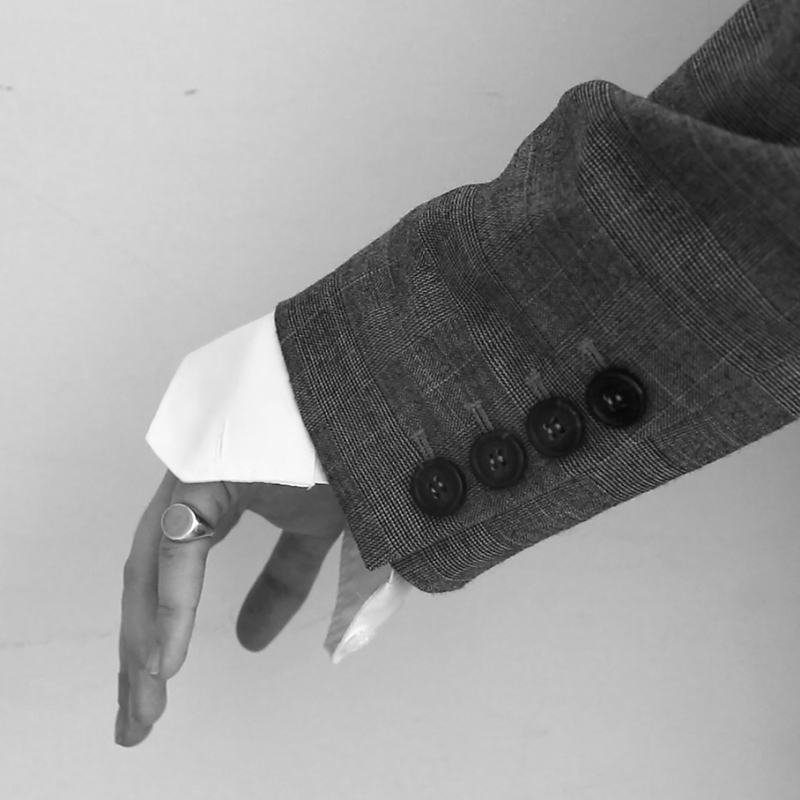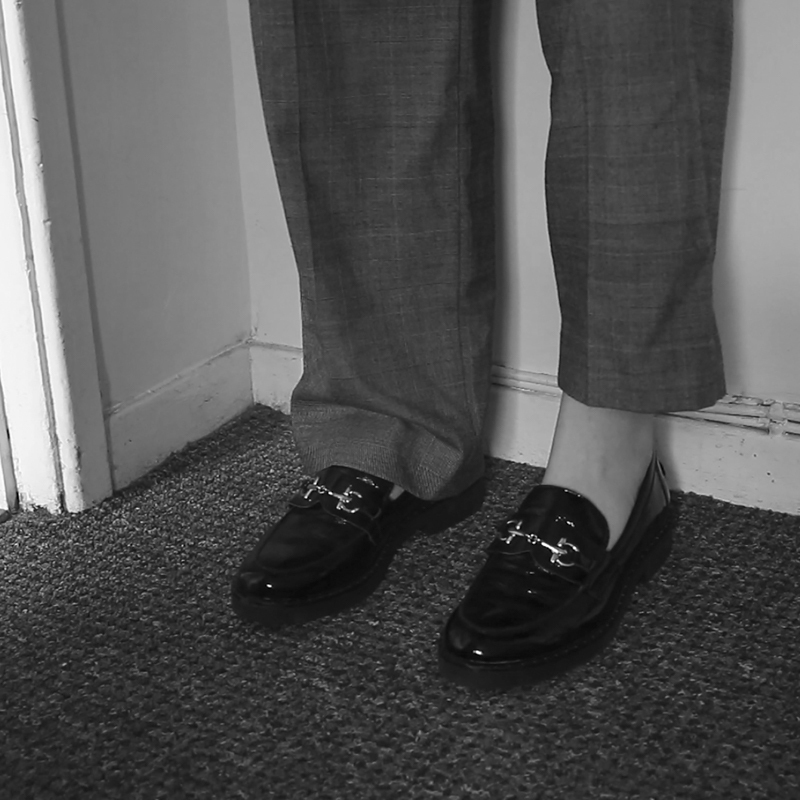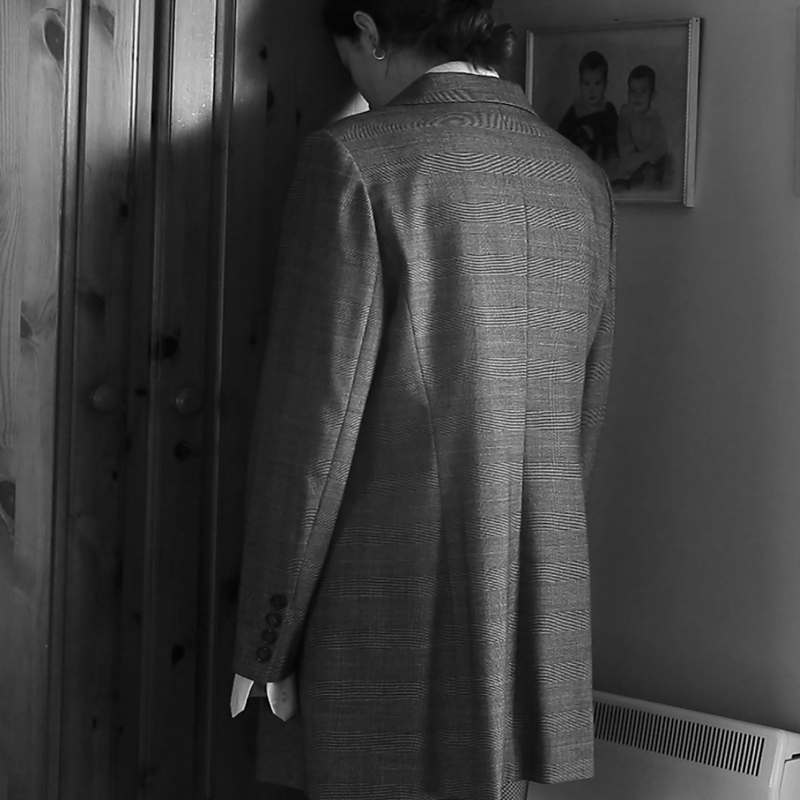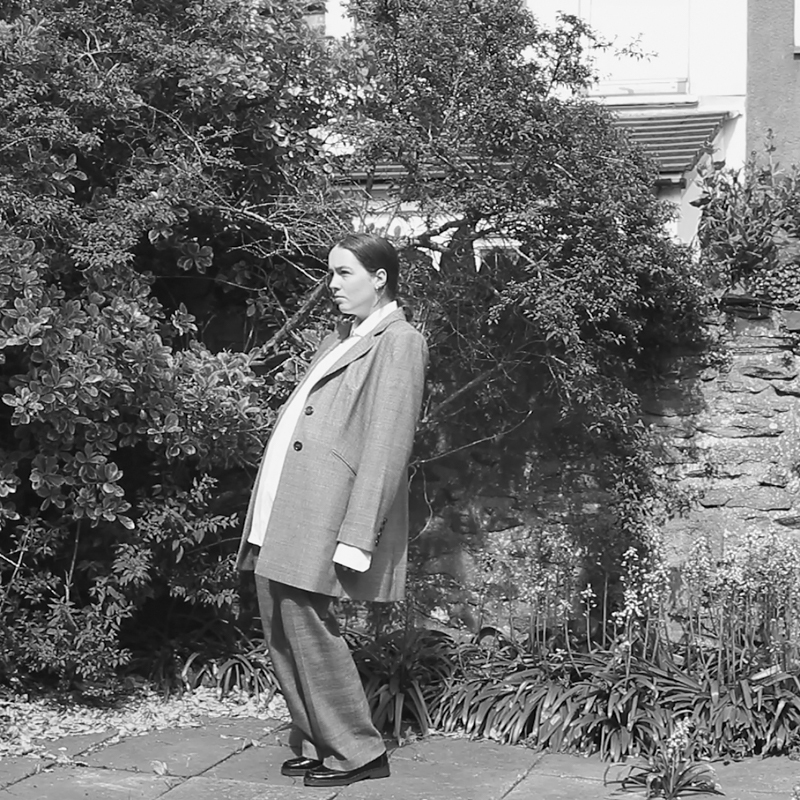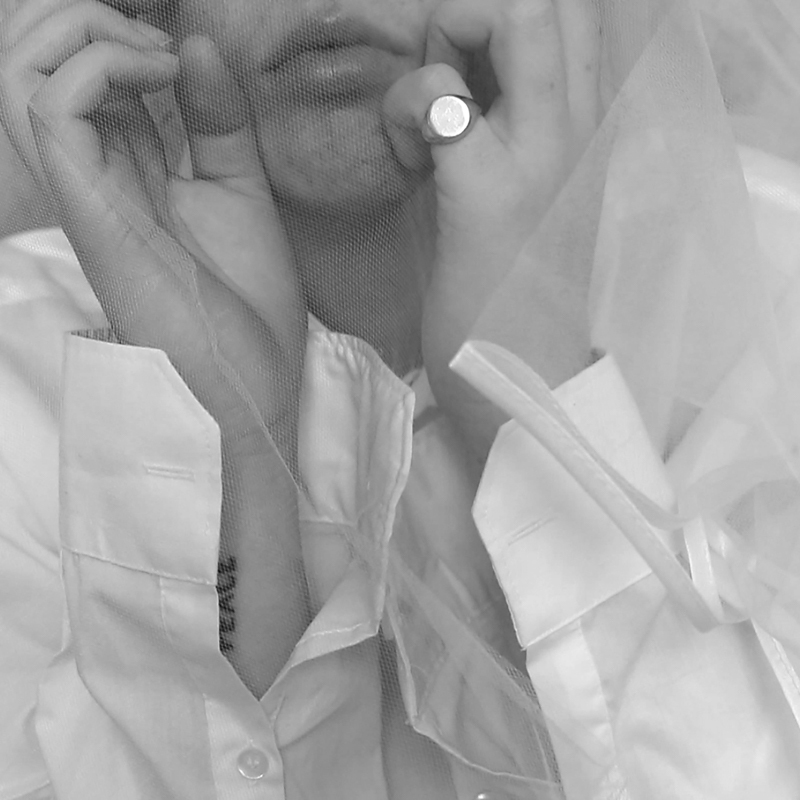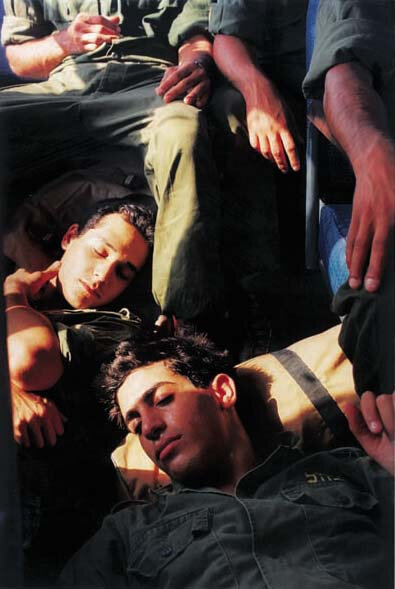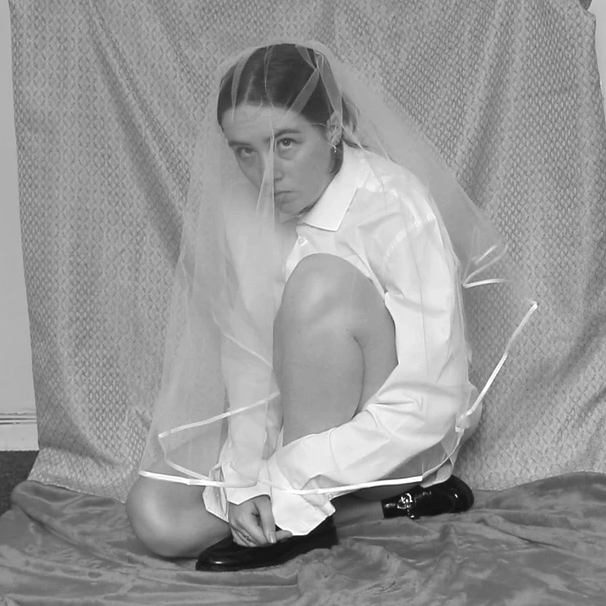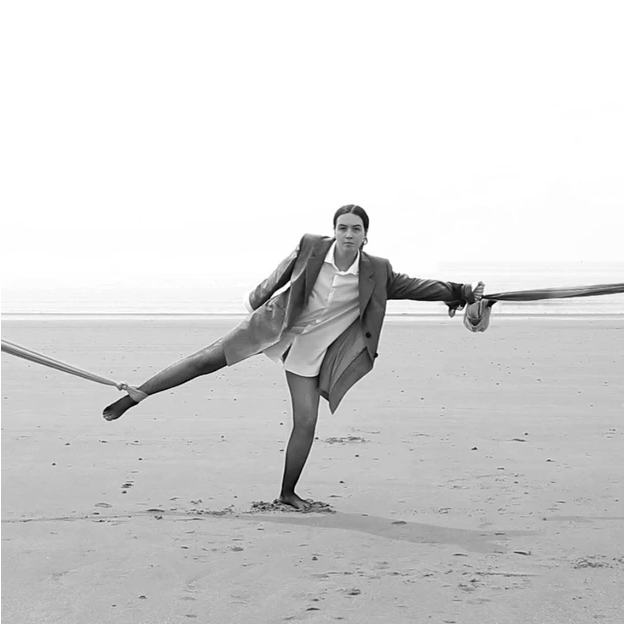Daily Archives: 16/10/2020
Filters
Artist Comparison – Claude Cahun & Shannon O’Donnell
Claude Cahun

Cahun was a French sculptor, writer and photographer born 25th October 1894 till the 8th December 1954. They’re real name is Lucy Renee Mathilde Schwob. She adopted the gender-ambiguous name Claude Cahun in 1917 and is best known for their self portraits, in which Cahun assumed a variety of personae. Their work is both political and personal and often undermined traditional concepts of static gender roles. In their autobiography, they explained, ‘Masculine? Feminine? It depends on the situation. Neuter is the only gender that always suits me. ‘ Her work was very controversial for her time and even when to extremes such as shaving her head, which would’ve been frowned upon within her time; she was courageous and unafraid to express herself. She was often considered part of the Surrealist artist group due to her ‘odd’ and ‘different’ work for her time.
https://www.jerseyheritage.org/collection-items/claude-cahun
Shannon O’Donnell
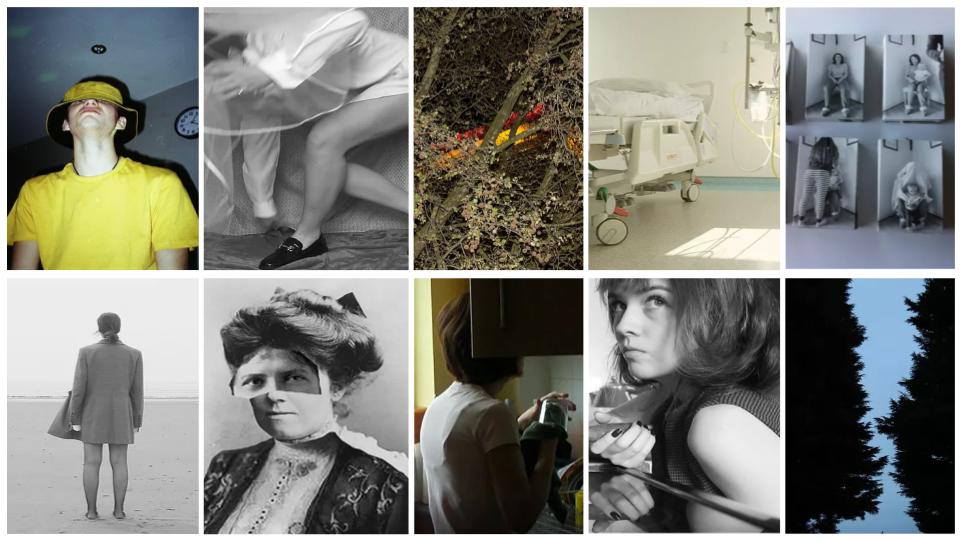
Shannon O’Donnell was born in Jersey, Channel Islands and also attended Hautlieu School, studying Photography, Media and History which all seem to interlink within her work. Her images explore themes around gendered experience with a focus on femininity and masculinity as gendered traits. Through her deep research and a sociological approach to her work she explores the self and identity. Her fascination lies within questioning society and challenging traditional views of gender through her work. She claims her work is informed by her own personal experience and through interviewing specific demographics to help gage a sociological understanding of how gender is viewed or challenged within mainstream society.
Shannon came into Hautlieu and gave us a presentation that described her life as a student and showed us her inspirations, her research methods, her documentary films, and her techniques when it comes to creating photographs and videos.
Her inspirations are: Claude Cahun, Duane Michaels, Casa Susanna, Walter Pfeiffer, Adi Nes, Judith Butler and June Singer.
I noted some of her techniques when it comes to filming/photographing. She enjoys the use of sound scaping which consists of recording different sounds and compiling them together to put in the background of her videos, creating a dramatic and compelling effect. She also tends to record herself in front of the camera instead of actually photographing herself. She enjoys playing with her movements, actions and tends to have fun in front of the camera while recording in order to get the perfect shot for her narrative. After recording herself, she puts her videos into a software and actually print screen’s sections of her videos that she feels fits with her narrative and thus creates a still image out of her videos. She then edits the still images, creating an intriguing still image. She insists that tests are very important when it comes to filming in order to get the right lighting, exposure etc.
https://www.shannonodonnell.co.uk/about
Comparison of Cahun and O’Donnell
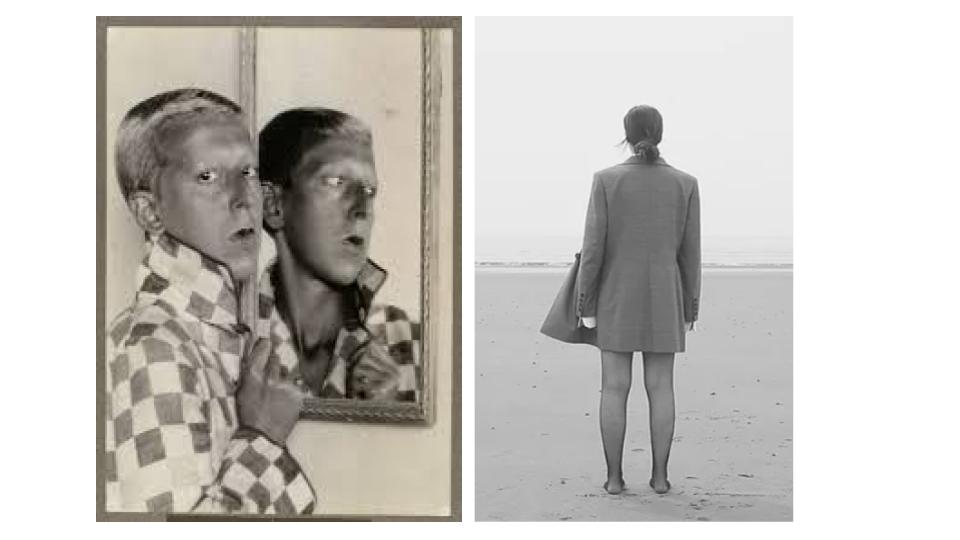
TECHNICAL: The lighting that the two artists seem to use are very similar and appear to both use natural lighting. Both also seem to have a high level of control over the camera. It is easy to recognise that they have positioned and located their camera in a specific way in order to get their self portraits correct. Both artists most likely also used a lower aperture in order to achieve a brighter photograph since natural lighting was used. I know that Shannon in fact did not use shutter speed as she likes to video herself in certain position and then create still images out of that video, however, Claude Cahun most likely used a fast shutter speed so that she didn’t have to stay in the position for a long amount of time since her images were self portraits.
VISUAL: Both artists, as you can see from the images above, enjoy photographing and editing their images in black and white. Claude is an early photographer, therefore the technology wasn’t quite advanced as it is now, therefore her images are most likely black and white due to the technology that was available in Cahun’s day. On the other hand, Shannon has clearly edited her still images to be black and white, most likely to increase the atmosphere of her narrative in her images, and also maybe because she was aiming to create images similar to those of Cahun’s. The tones of their images in this example is quite bright, however often the tone of their images are quite dark which creates a mysterious atmosphere and also a historical atmosphere. The composition of both their images are a little different. Cahun clearly positioned herself into specific poses and in different places in order to create a nicely composed image, however O’Donnell enjoys filming herself in front of the camera in various different poses using various different movements in order to capture the perfect still image while editing.
CONTEXTUAL&CONCEPTUAL: To conclude, both artists have very similar concepts. They both enjoy exploring identity and more specifically how gender is a social construct and they both enjoy breaking that boundary of a construct concept and exploring fluidity of gender through photography. As you can see, Cahun was not gender-constructed and explored the boundaries through hair experimentation and clothing experimentation. Shannon also does this through her videos and still images. As you can see in Shannon’s photo on the right, she is exploring gender by portraying herself in a suit which is seen as powerful and masculine, almost breaking the stereotypes. Both artists; photography narratives also come from a personal standpoint within their identity.
Shannon O’donnell // Claude Cahun
Claud Cahun –
If there is horror, it is for those who speak indifferently of the next war. If there is hate, it is for hateful qualities, not nations. If there is love, it is because this alone kept me alive.
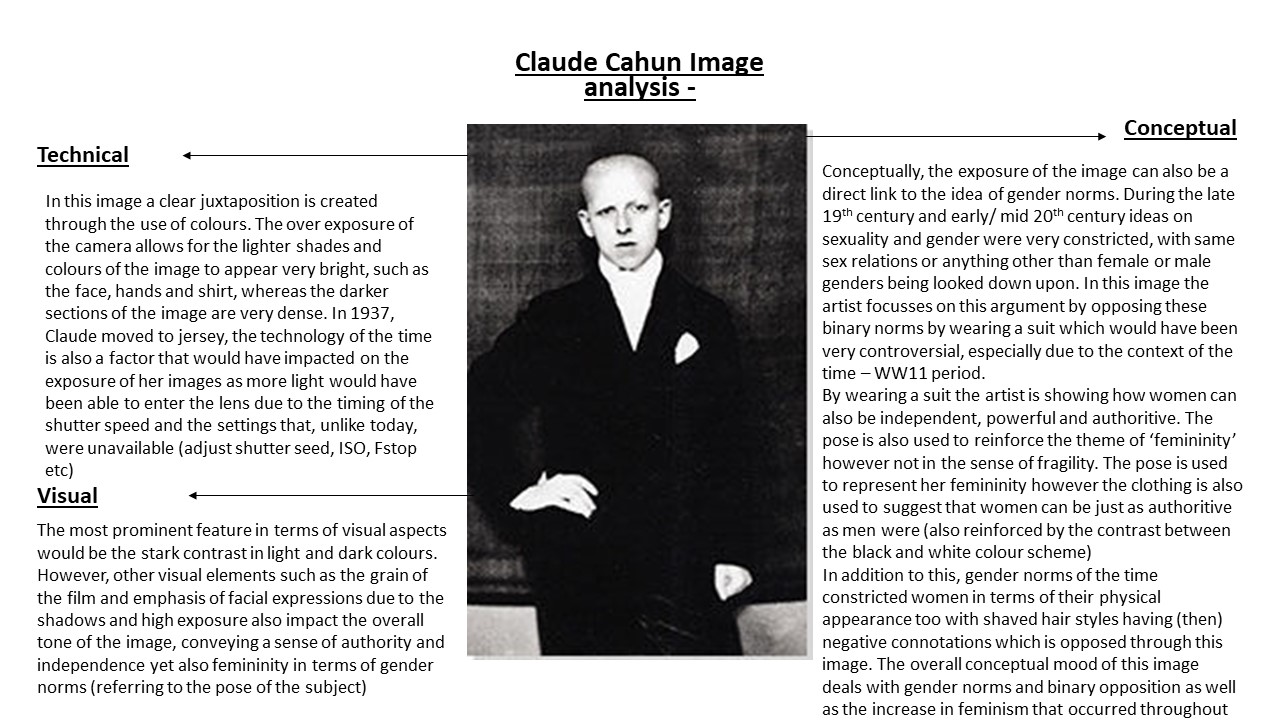
Shannon O’Donnell –
My fascination lies with questioning society and challenging traditional views of gender through my work. My work is informed by my personal experience and through interviewing specific demographics to help gage a sociological understanding of how gender is viewed or challenged within mainstream society.
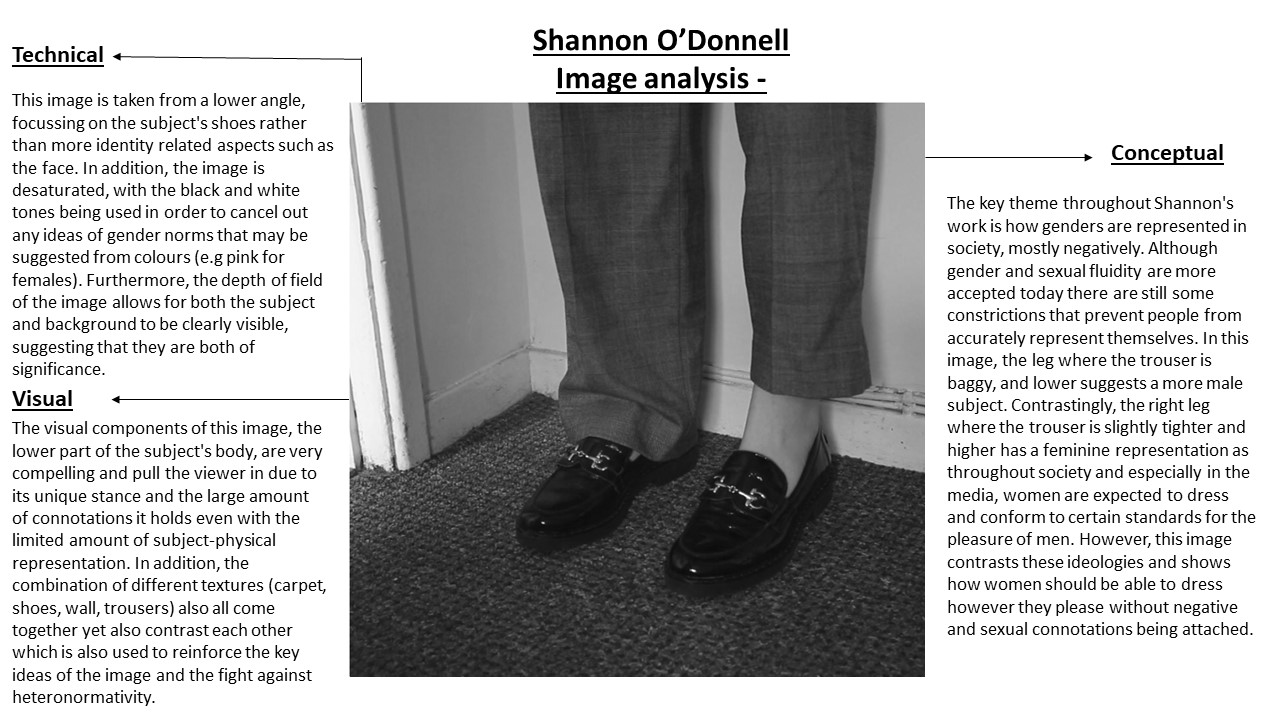
Comparison –

Useful Sources –
ART AND ACTIVISM: PROTEST AND MOVEMENTS
NARRATIVE AND DESIGN
Here I will guide you through my thought process and why I laid out my Zine the way I did, explaining context and reasoning behind each and every photo.
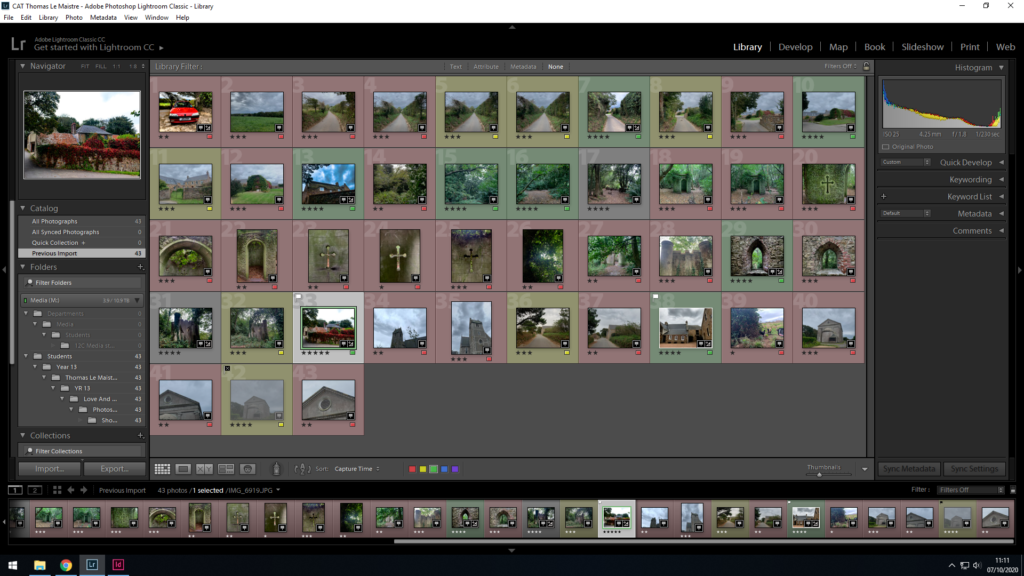
In all my three photo shoots, for my first editing process, I used the 5 star rating feature of Lightroom Classic CC to rate all my photos. Then, based on these ratings that i gave my photos, i decided whether they’d be used or not by filtering through using the p key on the keyboard to approve photos as demonstrated by the small white flag in the upper left hand corner, and alternatively used the x key on the keyboard to disprove photos as shown by the black x symbol in the upper right-hand corner.
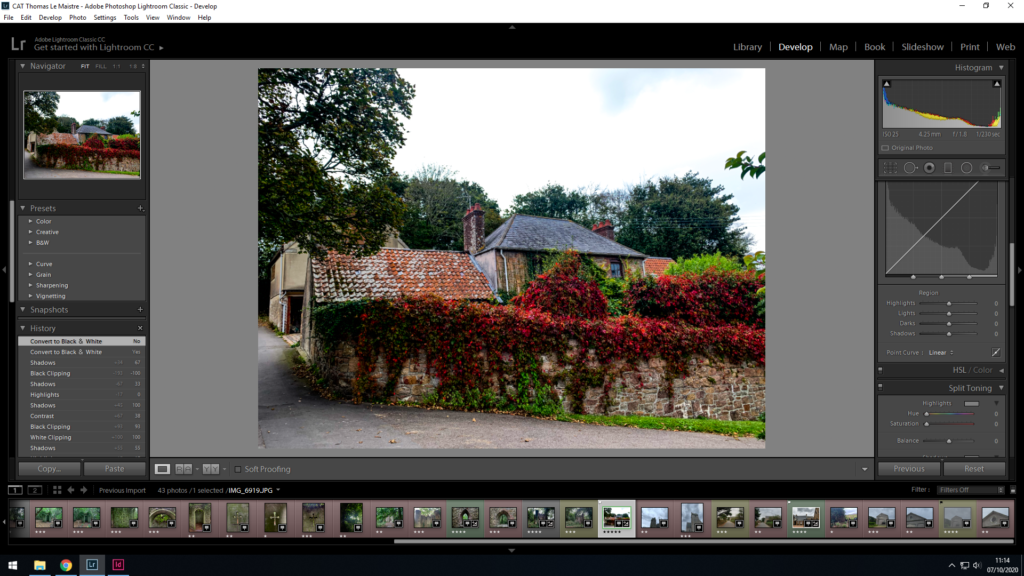
After I chose my best set of images, I proceeded to edit almost every aspect of each of my chosen photos with the ‘Develop’ tab as can be seen in the photo above to the right-hand side. Here I could edit the exposure, contrast, blacks/whites, shadows and highlights of each and every photo, also adding a darker border in the corners known as vignette to draw the eyes towards the centre of the photo highlighting the subject, whether it be a person, object or building.
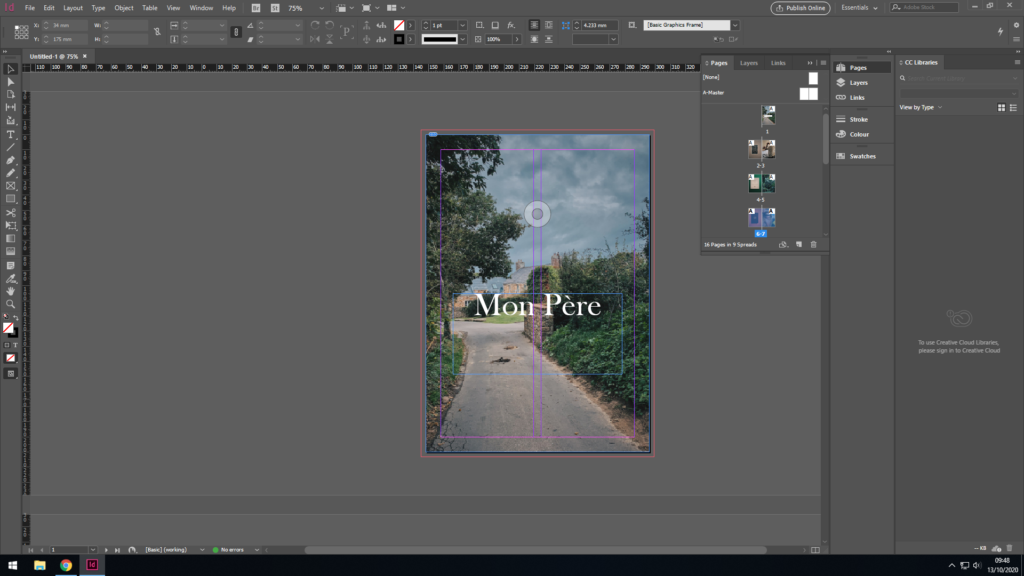
For my front cover, I needed a bold and eye catching photo, however not too “in your face” so to speak. I wanted to go for a more chilled out, relaxed, nostalgic vibe, nothing too abstract or aggressive as that doesn’t fit the story of my zine very well. The photo in question had been chosen mainly because it is very significant as it was the house my father was brought up in from a young age. I like the colours as they aren’t too punchy, however deliver a nice contrast in places and highlights Furthermore, the title is fitting as it translates ‘My Father’ to french. In addition to simply explaining what my zine is about, it’s also written in french as both me and my dad and his whole side of the family have close links with France, with my dad being half French making me Quarter French.
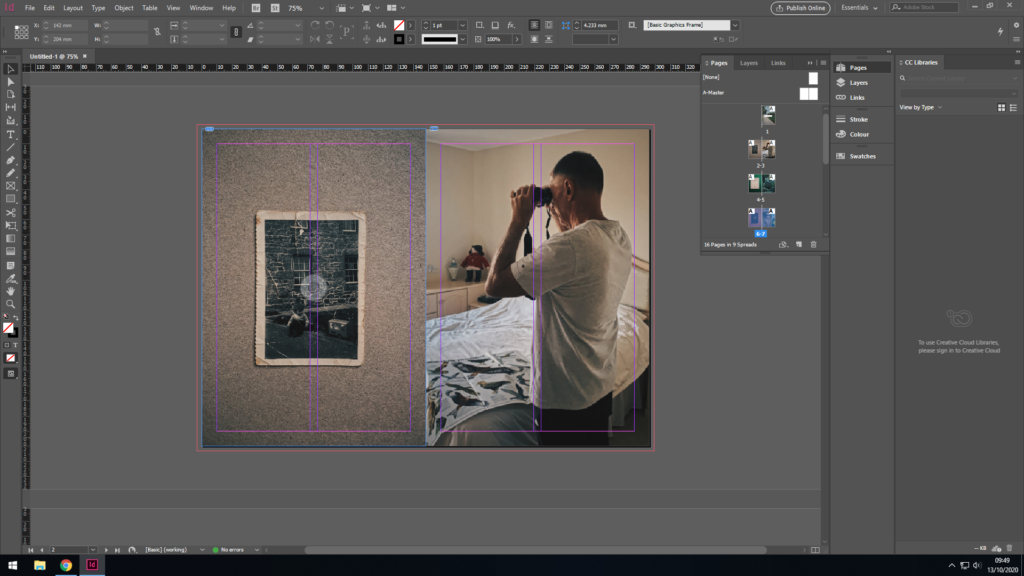
For the second and third page, I thought it was only fitting to include the subject of this entire story, my dad. To achieve this, I wanted to include a childhood photo of his compared to a very recent photo of him. Firstly, the childhood photo of him was placed first as it is essentially puts both photos in chronological order, as it came many years before the next photo of him in the present day at the age of 67, which also creates a stark contrast as both photos have been taken around 65 years apart. Furthermore, both photos my dad is entertaining himself with a hobby, both photos fit together as they essentially highlight his curious side, and potentially his childish side too. Lastly, both photos are comprised of a similar colour palette of beige, browns and whites, which results in similar, matching photographs that fit together hand in hand to make a satisfying double page spread for the observer to look at.
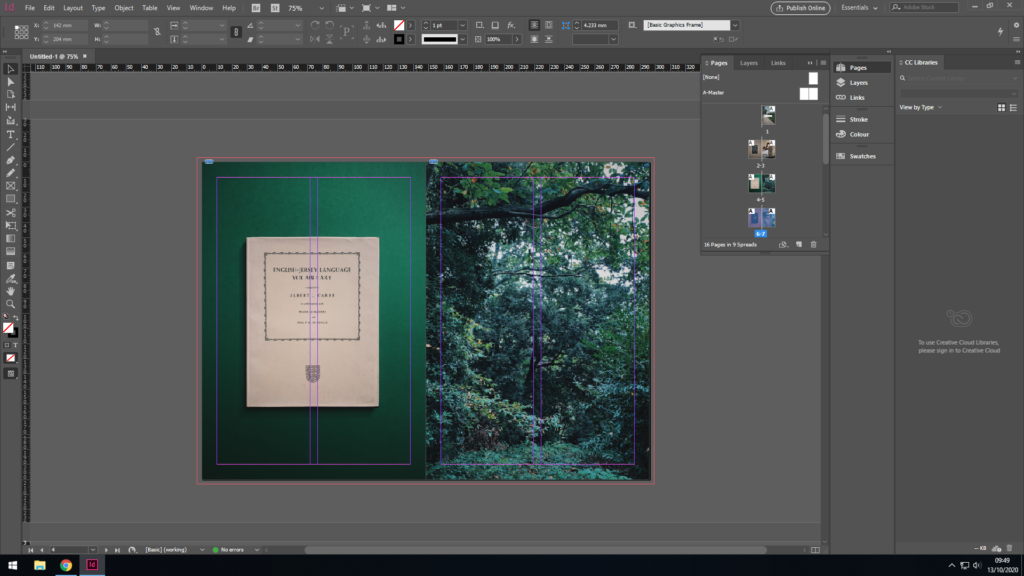
For the second page, I wanted to mix it up a bit, so rather than carry on with photos of my dad, I wanted to add something much different, however relevant to the story at the same time. To the left, there is the Jersey-French dictionary which my dads uncle published and is quite famous and significant to Jersey’s history even to this day. I placed the book on a green background as the colours contrasted nicely aswell as complimenting each other in a subtle way, as the book has a tint of green to it. I centred the photo of the book in lightroom to make it symmetrical and matches the previous page where there is a childhood photo of my dad instead.
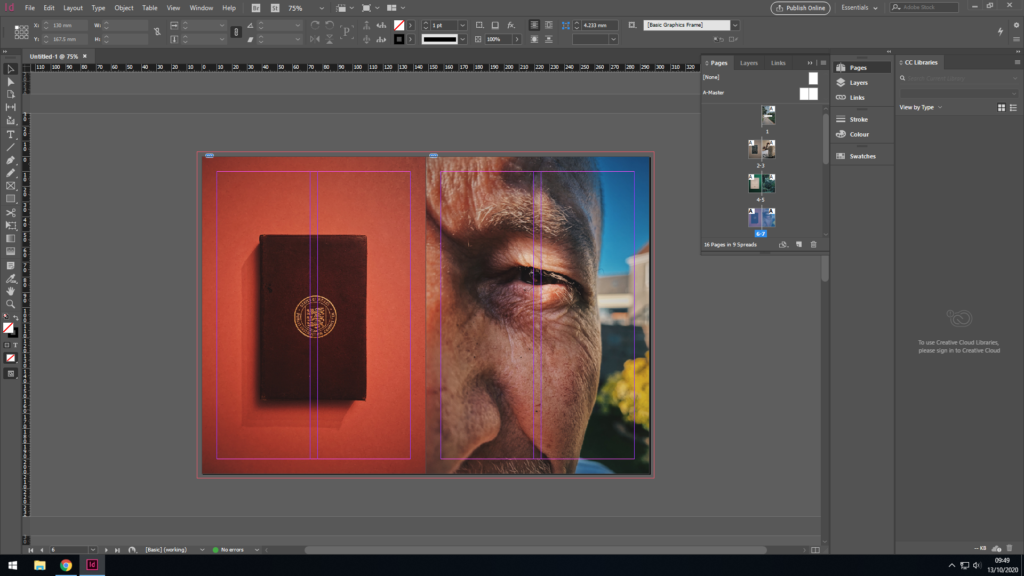
Yet again, I wanted to match colours between the two photos where the background that compliments the book on the first image, also compliments my dad’s skin tones, with vibrant hints of oranges and yellows making up the majority of the colour palette on this double page spread. The first image as previously is a book and also has been centered with the aim of symmetry and continuity. It follows a theme with the past 2 photos where a random (although significant to the story) object has been placed on a colourful , contrasting background. The photo on the second page (to the right) is a zoomed in photo of my dad who is the main focus of this story and whole zine, where his eye is in the centre of the page.
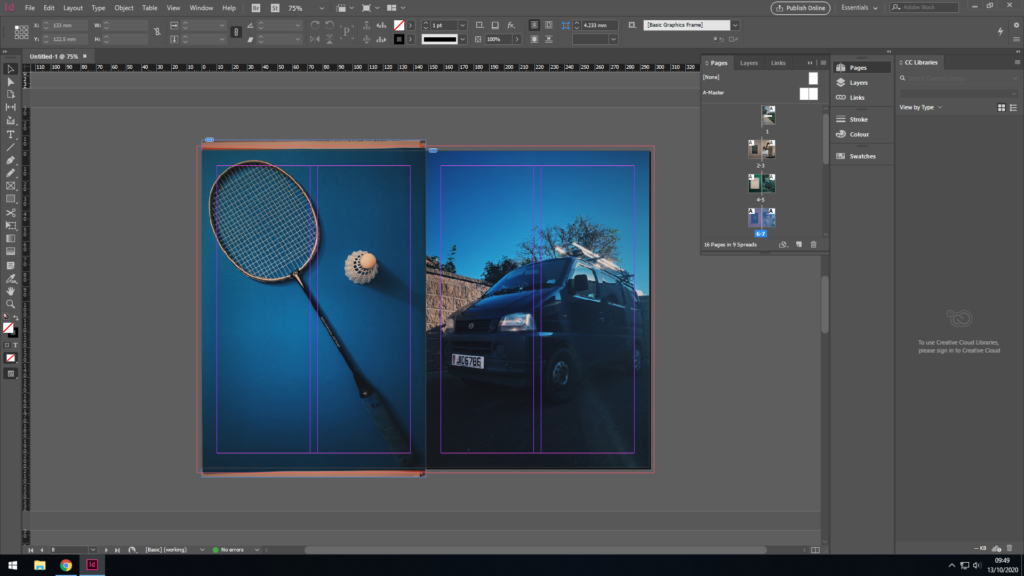
Again, the theme carries on with the animate object to the left. My dad enjoyed badminton much as a kid, teenager through to his adult years and played it often with his mates. It’s also meaningful to me as he taught me badminton with that exact raquet, the same one he used from a young age. To the right, there is a photo of my dad’s work van, he is very hard working and has become very successful as a result. Both photos as symmetrical as per usual throughout this zine, as well as both sharing the blue tints throughout the photo, hence why i placed them together. Also, one could say the first photo shows my dad’s playful and childish side, the other shows his serious, hardworking side, adult side which provides a nice contrast between the two, and highlight the type of person my dad is.

Sticking with the theme, a close up photo of a Jersey stamp with my families’ (Le Maistre) name and crest on it. These were a series of Jersey stamps made after the original Jersey family names and has much historic importance, as well as having great significance to my story. Furthermore, the colours match between the two photos in a subtle way, as well as the having the flower in the crest on the stamp coinciding with the flowers in the photo adjacent to it. Everything has a meaning and everything has been placed intentionally where it is.
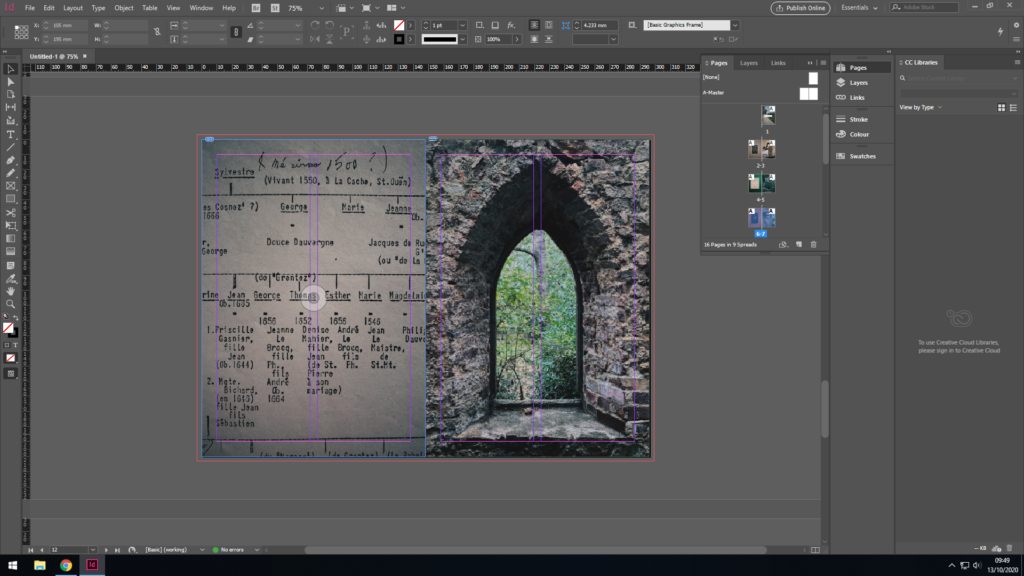
Here you can see me and my dad’s family tree paired up with an image of an old Jersey folly located in a forest. The family tree dates back to the 1500s however said to be even longer, however less documented, making us apart of one of the original Jersey families. This links back to the previous pages where the photo of the stamp resembles this strong family heritage.

The last two pages highlight my dad in the present dad, hence why they came last in the zine as I aimed to have it laid out in chronological order. The colours and composition match in both photos, as you can see my dad hard at work maintaining the garden. He really does have a good eye for detail.
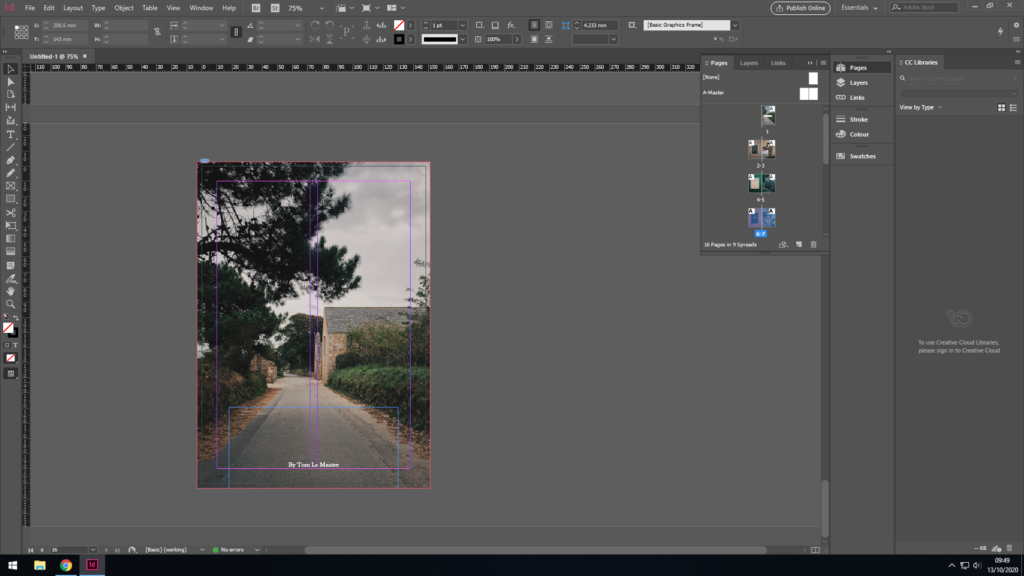
For the back cover, I wanted to chose a photo similar to the front cover, as well as still sharing some significance to my dad’s past. The photo I’ve chosen is my dads next house which he moved to after and spent his teenage years growing up in. Furthermore, both photos share similar colours so match when the book is closed, as well as also being in chronological order, i.e. his first house comes first in the book, the next house comes last.
IDENTITY POLITICS AND CULTURE WARS



Shannon O’donnell
Shannon O’Donnell’s work revolves around demonstrating gender binary.
Art is always and everywhere the secret confession, and at the same time the immortal movement of its time – Karl Marx
Influences:
Claude Cahun – “Her work is very political. I found it strange at first but once I got to learn about her and her gender bending, I thought her work was completely abstract and completely strange. Claude Cahun would write letters and put them in soldiers pockets telling them to shoot sergeants in the heads. Rebelled for her art and didn’t care about consequences.” Claude Cahun’s work relates to Shannon O’Donnell’s work as they both look into whether there are only two gender and how your gender defines you. Both try to make a political statement with their work. Originally, Claude Cahun’s name was Lucy Schwob in the early 20th century in France. By changing her name she was protesting against sexual and gender stereotypes.
Duane Michals – A famous photographer from the last century, mostly known for his work with series, multiple exposures and text. During the 1960’s Michals excelled in field photography and manipulated the medium to communicate narratives, this era was heavily influenced by photojournalism. He is widely known for his fame by frame format. The text that is handwritten on a lot of his texts gives the photos more personalisation and makes them more poetic as Michals intended.
“Duane Michals is another interest, not extravagant and big, just simplistic.” – Shannon O’Donnell
Casa Susanna – her photography began in the 60’s by taking photoshoots of men and transgender women. Her work was thought as an escape where men and transgender people could be theme-selves and not be ridiculed. The image were private and intimate for the models and the photographer and gave the models as sense of normality and safety.
“One day they could very housewifey, the next day they could be a group of women together having a gossip over tea.”
Walter Pfeiffer – He takes photographic portraits of friends, lovers and the youth surrounding him in cities such as Zurich, Paris and New York. His work links him to other photographers of that decade, such as Nan Goldin and Nobuyoshi Araki. His first published photographs appeared in the 1980’s.
“One click, and that’s it,”
Adi Nes – This photographer’s project is called Soldiers. Juxtaposing masculinity and manhood, his images use soft lighting, are very posed and use young models.
Theoretical Development – Judith Butler– talks about masculinity and femininity. In a interview she talks about how a young man was judged for the way he walked and was considered gay.
“Androgyny is not trying top manage the relationship between the opposites it is simply flowing between them” – June Singer
https://www.shannonodonnell.co.uk/personal
Shrinking violet was one of her projects in 2016. Mocking the traditional role that women held. In order to progress her work further into gender studies.
Another project was Abort Mission in 2018- she saw people praying outside an abortion clinic. Protesters claiming it to be their religion, although nothing says you can’t abort a child and that you should pray in public. A road in Cardiff had a lot of sex clubs and pubs around the area where the anti abortion protesters were.
By Your Beside in 2018 – her mum was in a coma because she couldn’t breath for herself. It was Christmas Day and she was taken into hospital, she fought for two days and was then put into a coma, had 2 bacterial infections in her lungs. Made a film and interviewed people in her family about the experience, the film was called Susans Sleep. Used sound sacking/layered audio with own footage and music.
The next project was The Cat and The Mice, at the river side in Cardiff the suffragette movement in Wales, to do with Margaret Macworth and Kate Evans. The suffragettes were violent and the suffragists were more political, less known and didn’t like the suffragettes. She titled this project as The Cat and The Mice because it was about the suffragettes getting starved in cells in prison and found out about this due researching archives in books and medals from Kate Evans from surviving in prison. One of the events that occurred during the suffragette movement was Margaret Macworth throwing a bomb into a postbox. Shannon O’Donnell took a photo on where the postbox was blown to pieces which has now been replaced. She also took a photo of Tescos where the peace hall had been replaced. To add to her project she made an exhibition called Where they Stood. In this project she reconstructed the place where the suffragettes were force fed. The room where she did had a chair in an empty room, Shannon O’Donnell reconstructed this.
Another big movement that happened during these times was due to Emily Pankhearst – her aim was to get attention and be in newspapers to get more publicity. The suffragettes were seen as terrorists and were laughed at due to their “stupid actions” at the time. The incident where people started to have more debates on the true meaning behind what the suffragettes doing was at a horse race where Emily jumped out in front of the King’s horse when she was trying to put a flag on the horse. People also saw this as a suicide mission and died from the injuries.
Thats not the way the river flows was another project in 2019; mocking masculinity and felinity and questioning what makes you what you are. She made a short film about it. Still images are taken from her films. She made a poem about gender and the idea that society follows a strict binary of male and female. She made the film in black and white. The way she documented this project was by setting up a tripod and pressing record; she says it “adds to it as its more like a performance” she then takes photos of the the good shots in the film. She takes the stills into premier film and then into photoshop and edits them. Her work is more of a documentary, as she looks at large political problems and responding to the world around her.
Is it just being a women or is there more layers to it? – Shannon O’Donnell
Current work:
Photography at uni – did presentations and seminars and harshly critiqued. Progression wise there was a lot more research and theory in history at uni. It was more independent, self driven and difficult and challenging. Her course drove the idea of big projects over a couple years and getting grants and awards.
She is currently working in jersey in the photographic archives, Digitising a lot of film negative and analogue processes and makes videos for social media. She does this on a camera set up and shoots on the laptop straight from the camera.
art and activism: identity politics
Identity politics is defined by the Oxford Dictionary as the tendency for people of a particular social group (religion, race, sexuality, economic background) to form political alliances and stray from broader party politics. The term is more commonly used in conjunction with minority groups like the LGBTQ+ community, ethnic minorites, disabled people or immigrants and the issues that often concern or involve them, like debates on gun control, women’s reproductive rights, racially-based police brutality, and immigration policies, but this is inaccurate as it can be just as easily applied to more right-wing and non-minority-focused policies and political issues, not just the left and the minorities. For example, the simple fact of whether someone voted “leave” or “remain” on the Brexit referendum has well-known associated stereotypes that could even be used to guess the voter’s race, economic class, gender, or even their career.
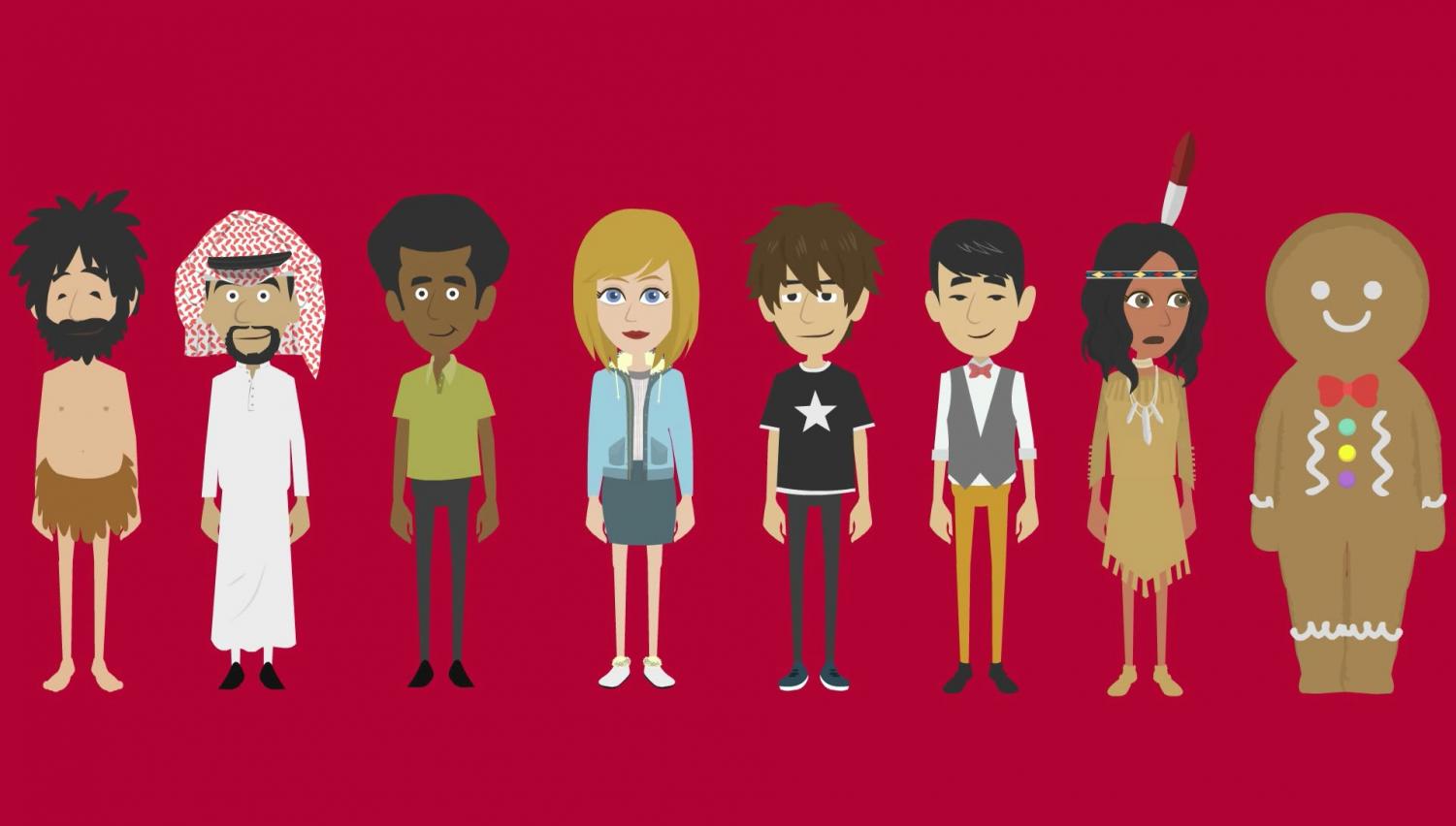
The massive increase of the use of identity politics in everyday political issues could be held responsible for the culture wars said to be on the rise, especially with the rising tensions on other issues as well. A culture war is defined as a conflict between groups of different ideals and beliefs. While on the one hand, identity politics are useful for helping to give minority groups rights and to help people band together and raise awareness of issues they feel may affect their own community disproportionally to others, the rise of “extreme” identity politics has been linked to an increase in tribalism and the massive degrees of separation between the right and the left in modern politics. The fact that right-wing and left-wing parties are pulling further apart from each other, also resulting in centrist parties moving further to the right all over the world, negatively impacts minority groups and causes confusion in ordinary people, who may not be able to identify so strongly with the identity groups on either side.
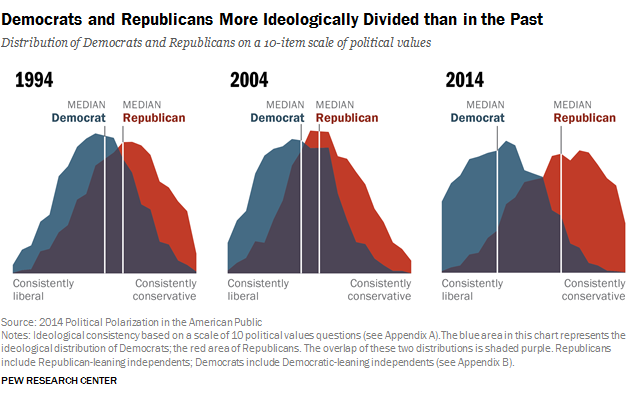
The rise of identity politics and the subsequent increase in Western right-wing party voters being more likely to be white, conservative, religious/evangelical and rural and left-wing party voters being more likely to be non-white, liberal, and non-religious has caused a massive divide in society, to the point where, depending on the party you voted on, your very identity may be threatened by their policies.
LINKS-
https://www.theguardian.com/commentisfree/2018/jul/14/identity-politics-right-left-trump-racism
https://www.vox.com/identities/2016/12/2/13718770/identity-politics
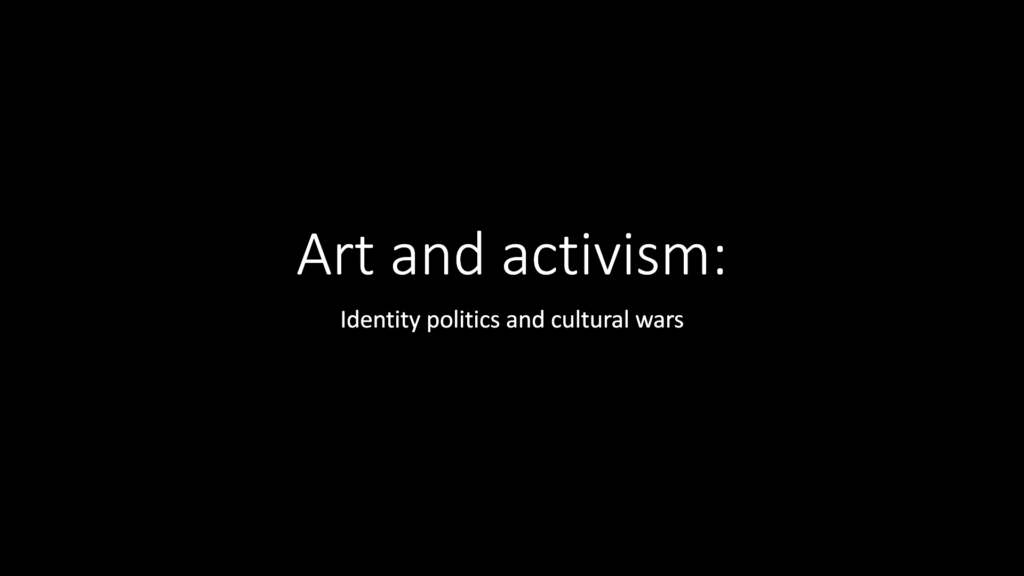
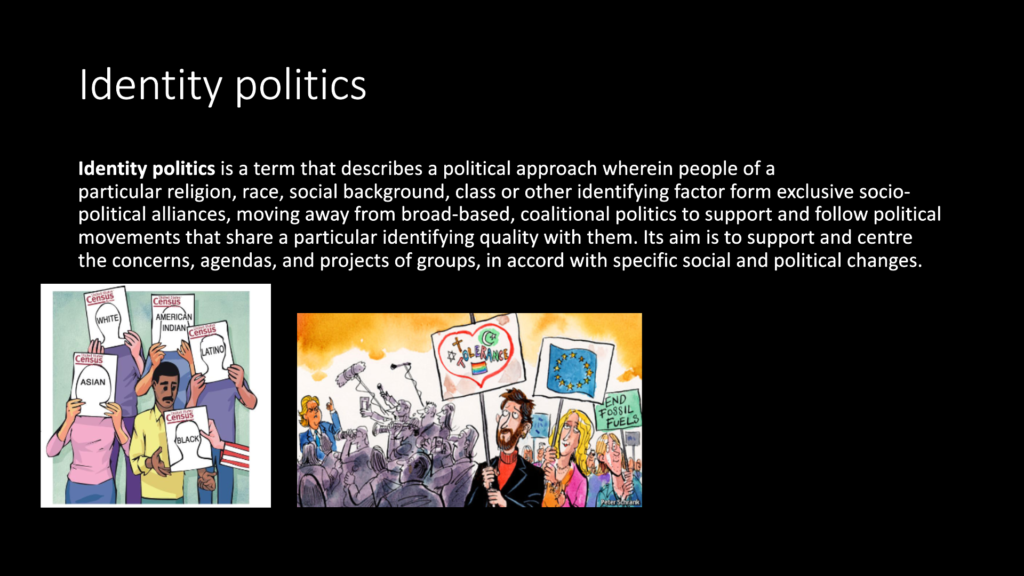
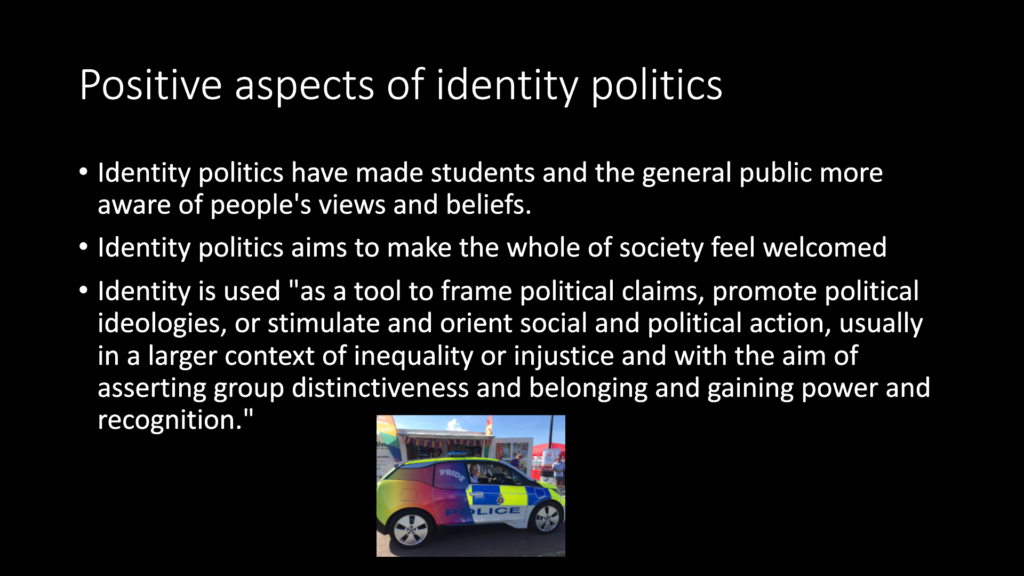
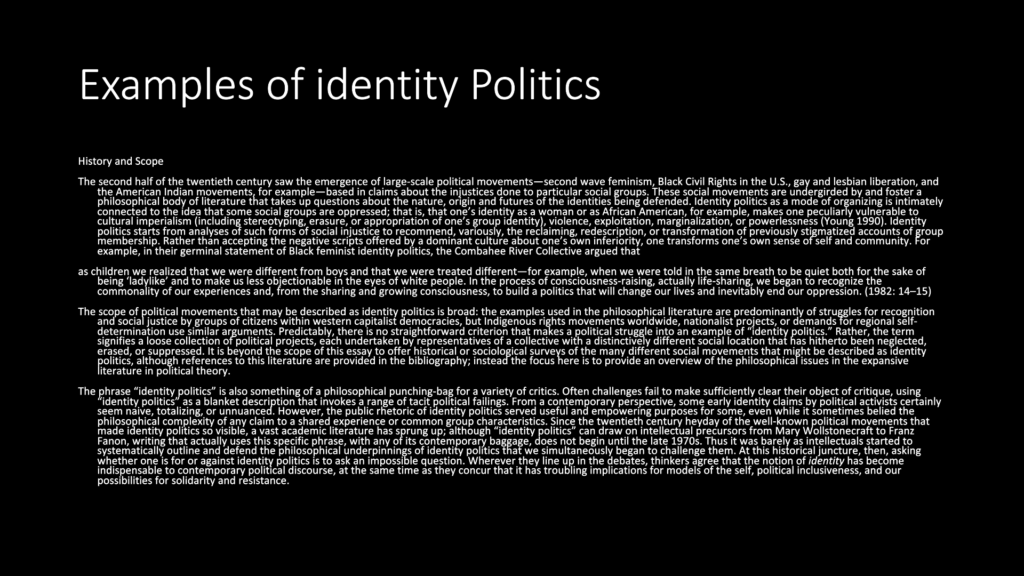
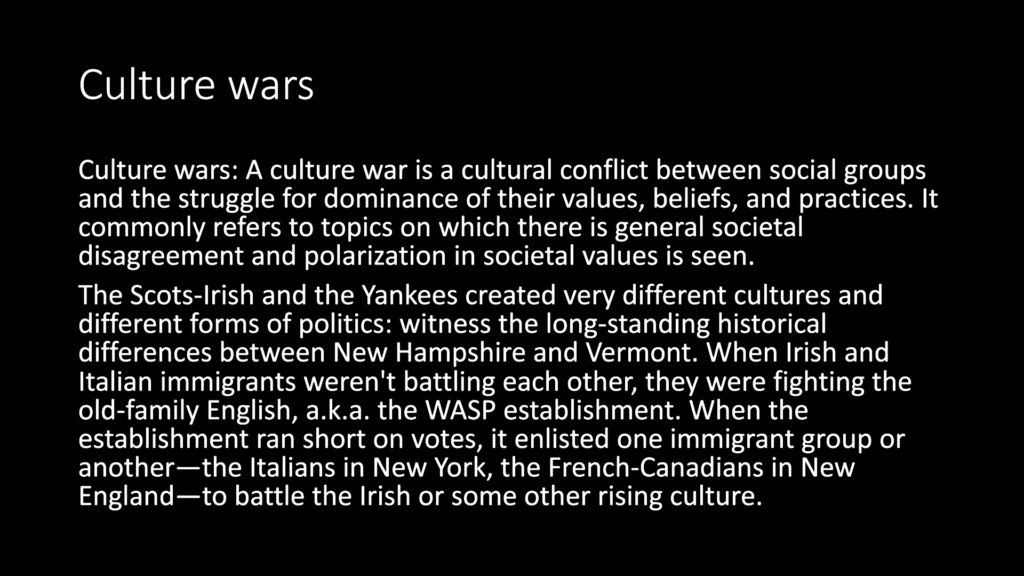
Contemporary Photographer- Shannon O’donnell
Shannon O’Donnell is a contemporary, documentary photographer. Her work focuses on modern issues, directly responding to the world and the immediate environment around her. She claims she has to be ‘hyper-aware’ when it comes to her work and she pays close attention to the news and events happening round the world to achieve this. O’Donnell incorporates history, media and photography together to create her work, which predominantly deconstructs gender binary. To O’Donnell, gender is a socially-constructed concept.
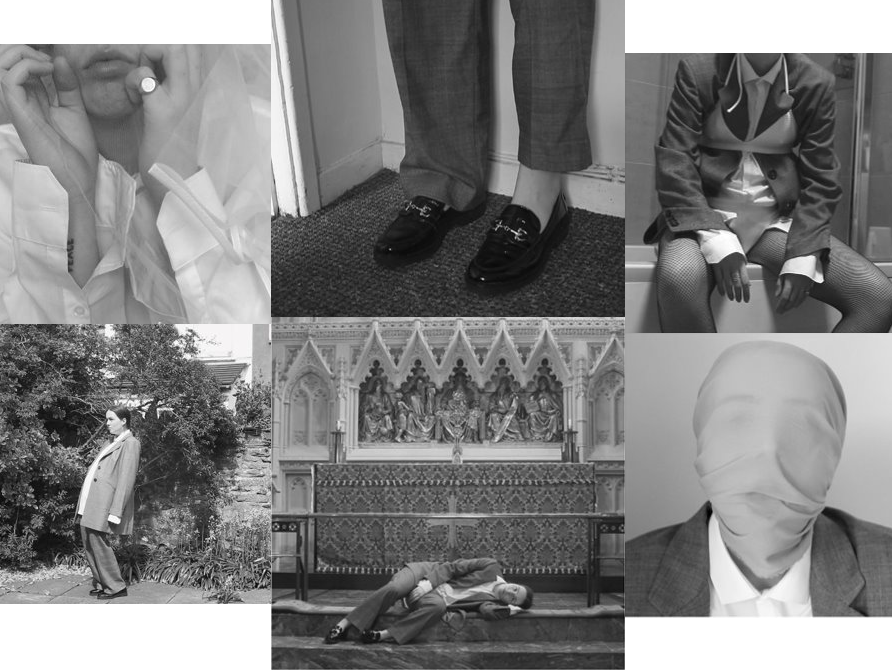
O’Donnell’s inspirations
Claude Cahun:
As a previous student of Hautlieu, O’Donnell had been introduced to the politically charged work of Claude Cahun, who she claims is now a major influence on her work. In her own words, O’Donnell describes Cahun’s work as “strange” and was inspired by the way she presented the theme of rebellion through her ‘gender bending’ themes within her work.
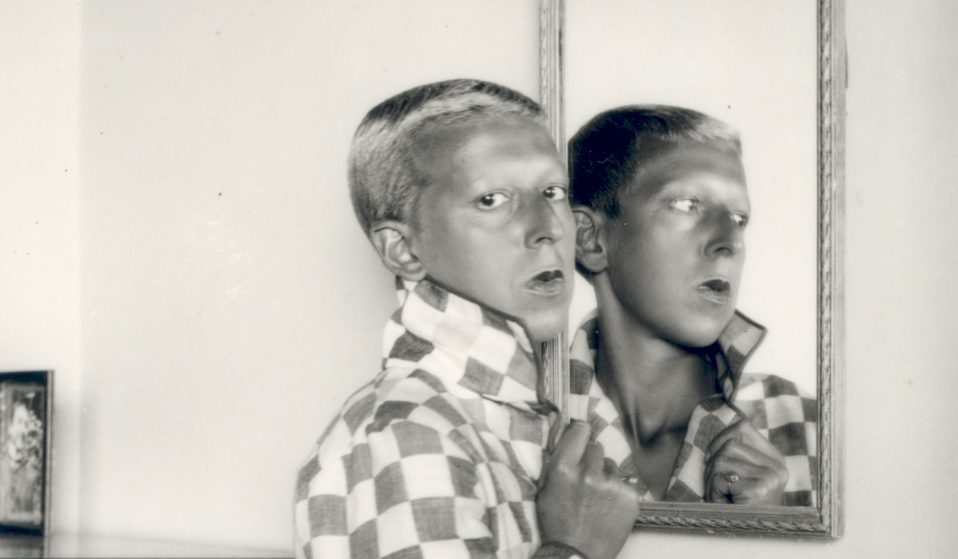
O’Donnell is fixated on the history of Cahun and how she wrote letters for the soldiers of WWII and placed them in their uniform, asking them to shoot their sergeants. This act was extremely rebellious.
Karl Marx:
Marx is another political inspiration for O’Donnell. She incorporates into her work the ideas brought about by the following quote:
The oppressed are allowed once every few years to decide which particular representatives of the oppressing class are to represent and repress them.
Karl Marx
Additionally, photographers Walter Pfeiffer, Adi Nes, and writer June Singer’s book on androgyny, ‘The opposites within’ have also majorly influenced O’Donnell’s work.
O’Donnell claims Pfeiffer’s work is ‘poetic’, capturing the true nature of his subjects as well as giving them control over how they want to present themselves to the camera and to the world.
Adi Nes is an Israeli photographer who incorporates a mix of sexuality in his work, deconstructing masculinity as a concept. His use of soft lighting in his work inspired O’Donnell, as she viewed it as juxtaposing the harshness and boldness of manhood. His images are highly staged, often based on parables and cultural memory. His work resembles that of renaissance paintings. Additionally, sexual tension is present in his work as he explores the ideas of homosexuality.
O’Donnell’s work
Her earliest work, ‘Shrinking Violet’ is based on the role of her mother within her household and workplace. She claims it’s ‘mocking the traditional roles of women’. This piece of work particular shows a criticism of the traditionally patriarchal society we live in and her work clearly reflects a protest against this.
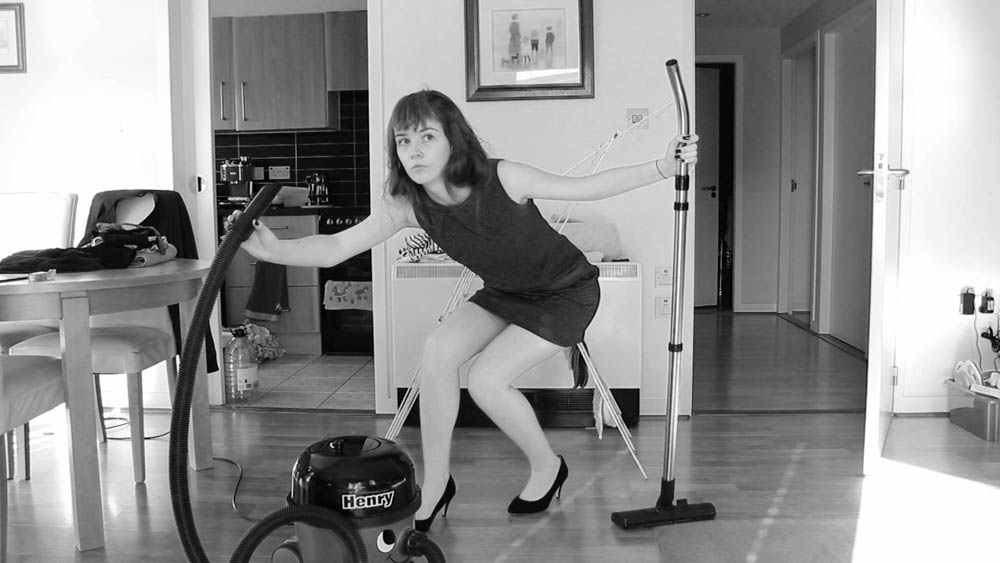
O’Donnell then progressed with her work, producing ‘Abort Mission’, ‘By your bedside’ and ‘The Cat and the Mice’ in 2018. ‘Abort Mission‘ addresses the culture wars between religion and abortion. O’Donnell was inspired to make this as she came across anti-abortion protesters praying outside of an abortion clinic, claiming that their protesting was relevant and important to their religion. Intrigued by this, O’Donnell read through the bible and researched the church, in turn finding no evidence of abortion being ‘wrong’. For her work, she added a sense of focus towards the church as well as inspecting how society view women.

‘The Cat and the Mice‘ is a clearly political project and highly important to O’Donnell’s work. It focuses on the Suffragettes, who carried out acts of violence in response to the extreme patriarchy they lived in. The movement was started by middle class women for women’s suffrage and particularly for their right to vote. In order to get in front of the newspapers, the suffragettes felt they had to be ‘militant’. They were considered as terrorists by society, as well as being mocked. A main story that inspired O’Donnell was about the suffragette who jumped in front of the King’s horse in an attempt to attach a flag to it during a live television broadcast. Unfortunately, the act resulted in a horrific accident that was broadcast live, clearly showing the desperation these women had for freedom. Her project is named after the Cat and Mouse act, aimed at the militant suffragettes who went on hunger strike during their imprisonment.
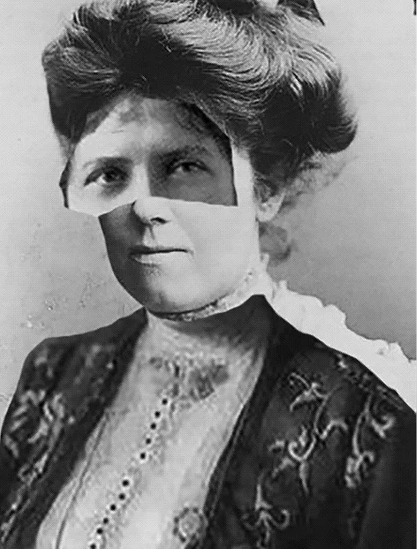
The Cat and the Mice 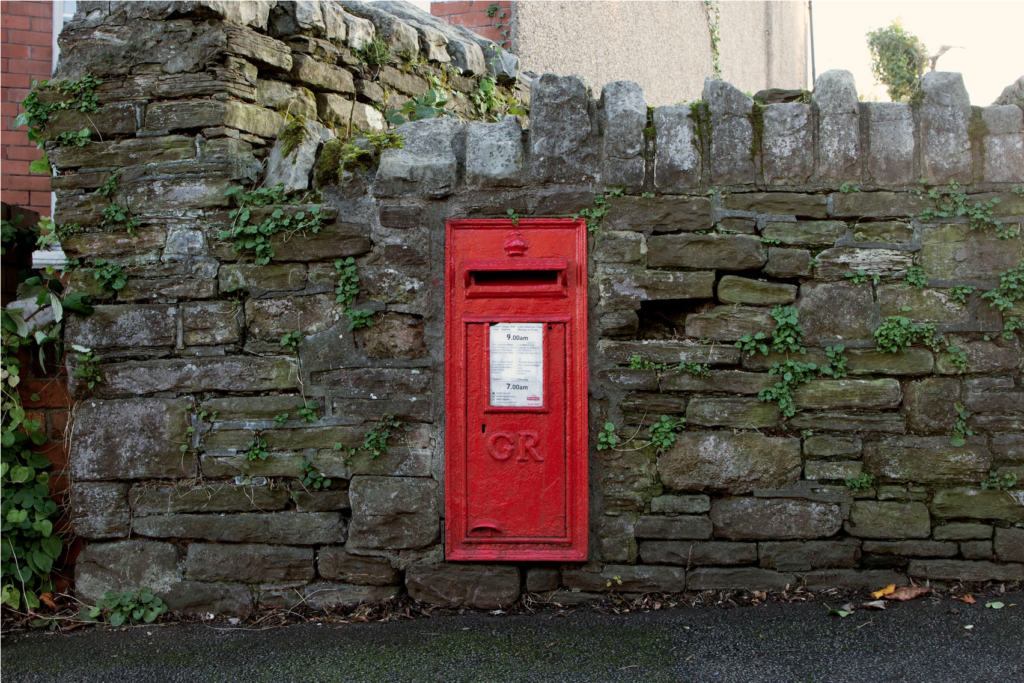
Finally, her film project ‘That’s not the way the river flows‘ from 2019 encapsulates the ambiguity of gender and masculinity. In this short film she questions her own gender identity, whether she is defined primarily by being a woman, rather than how she is as a person.
The film is made using what she refers to as ‘moving stills’. O’Donnell also wrote her own poem about society’s strict binary of male and female as a voice over for the film. The stills for her project are taken from these ‘moving stills’. In the video, she can be pictured wearing a suit (strictly male connotations) as well as mixing and incorporating female elements, such as heels, fishnet stockings and bras etc.
Her photography process
O’Donnell states that her audience is primarly aimed towards herself and that she works only for her own personal gain. Anyone else who resonates with her work is a bonus. Her process involves ‘performing’ for the camera.
- She sets up her tripod with her camera and starts to record.
- She then carries out a performance in the nature of her work (i.e. male, female, etc). O’Donnell claims that this is the ‘theoretical underpinning’ of her work.
- She then imports the video into Premiere, and takes stills from the video here.
The process removes the staged and unnatural feel of photo-shoots and allows more fluidity in her photographing process, in turn also giving her more flexibility in capturing the images she wants.
Photo Analysis
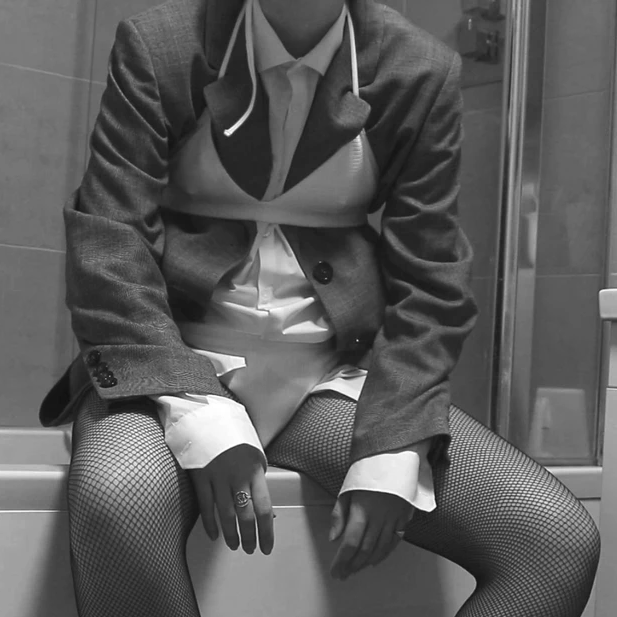
This image in particular presents O’Donnells personal issue with gender identity. Taken from the project ‘That’s not the way the river flows’, O’Donnell explores the social construct of gender binary, deconstructing it and questioning whether her own identity is entirely defined by being ‘female’.
The photo is set in what looks like a private bathroom in someone’s house. The setting itself amplifies the personal struggle O’Donnell is experiencing as a bathroom is easily lockable, small, private and enclosed. It has limited distractions and can possibly be comforting for the subject to access her own thoughts in. Additionally the lighting is fairly bright, showcasing the reality of O’Donnell’s existence and highlighting her outfit clearly. Though, the image is presented in black and white. The monochromatic effect of the image allows for a sharp focus on the subject.
The clothing she wears is obviously stereotypical. The first thing you notice when you look at the image is the bikini. Bikinis have female connotations, and so it initially shows the gender of the subject. However, this is juxtaposed by the suit it’s layered on top of. The blazer and shirt is associated with male clothing. Additionally, O’Donnell is seen wearing a signet ring (predominantly male) and fishnet stockings (predominantly female). This outfit choice is messy and contradictory, clearly showing the desperate nature of the subject trying to understand her identity. Possibly, she is criticising society by posing the question as to why these items of clothing are stereotyped to be male or female in the first place.
The positioning of subject is hunched. She also has limp arms resting upon her legs. This body language signifies a defeat after an internal struggle or effort to get free of social restraint and constriction. She looks as though she is sat in exhaustion.The theme of identity (or lack thereof) is prevalent in this image as her face has not been included, implies a struggle with a personal definition of herself.

